Inbox and Environment News: Issue 453
June 7 - 13, 2020: Issue 453
Vale Peter Slater, 1932–2020
One of Australia’s most renowned wildlife artists — Peter Slater — passed away on May 28th. He was 87.
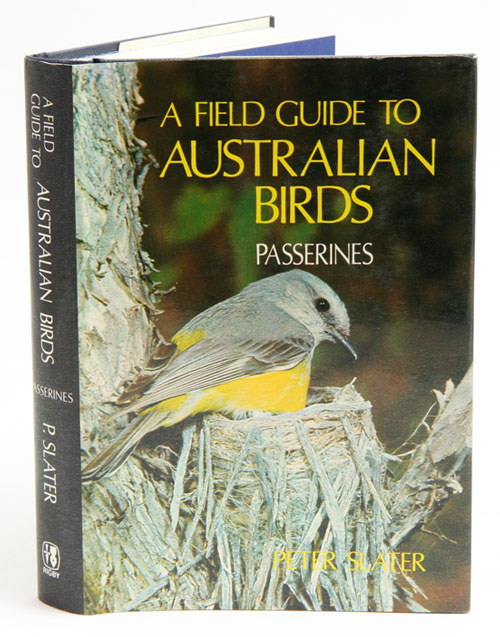 Peter’s interest in birds began when he was just 2 years old. This is hardly surprising, as he grew up in Western Australia, surrounded its remarkable diversity of unique birdlife. That early interest was to influence the rest of his life.
Peter’s interest in birds began when he was just 2 years old. This is hardly surprising, as he grew up in Western Australia, surrounded its remarkable diversity of unique birdlife. That early interest was to influence the rest of his life.
Peter started his artistic life as a bird photographer. With an astute eye, he used artistic principles to carefully compose his images, and his photographic portfolio was outstanding, winning numerous awards at international exhibitions. Fittingly, he was made an ‘Artiste of the Fédération Internationale de l'Art Photographique’ in 1964.
However, Peter also saw the merits of painting birds, which allows an artist to capture the essence of the subject in a way that photography often can’t. Despite his prowess with the camera, Peter is now probably best remembered for his prolific artwork. Indeed, he claimed to have painted every species of Australian bird at least four times!
Although he trained as a school teacher, and that was his early profession, his love of birds was barely concealed, always bubbling away just below the surface. In his spare time, he would watch birds, photograph and paint them, contributing his images to various wildlife books and other publications.
In 1966, Peter and his family moved to tropical North Queensland, where he was surrounded by another stunning array of birds, and 2 years later he quit teaching to become a professional wildlife painter.
Peter wrote and illustrated numerous books about Australian birds and other wildlife. Probably one of his most well known is his first field guide of Australian birds. Published in two parts, A Field Guide to Australian Birds was the first new Australian field guide published since Cayley’s What Bird is That? — which first hit the shelves the year before Peter was born! Peter’s new field guide revolutionised birdwatching in this country. It featured colour illustrations that actually looked like the birds they depicted, as well as innovations such as distribution maps and life-size outlines of the bills of seabirds to aid the identification of beachcast birds. He also wrote much of the text — a testament to his abilities as a naturalist. It remained the go-to reference for a decade or more.
In 1986, Peter produced, in collaboration with his family, a follow up — The Slater Field Guide to Australian Birds — another revolutionary work. It was the first field guide since Leach’s An Australian Bird Book (published in 1911) to be a suitable size to be taken into the field. It also featured images of the eggs of species that breed in Australia.
His two field guides became favourites of many Australian birdwatchers.
Fittingly, Peter was working on another book, this time on raptors, right till the end.
A modest man, Peter regularly worked in collaboration with others, and the acknowledgements in his books are a virtual ‘Who’s Who’ of Australian ornithology. Peter’s name rightly belongs alongside them.
Peter once said that he “lived for birds” and Australia’s birdwatching community can be grateful that he did.
Bauer's Midge Orchid At Ingleside
Bauer's Midge Orchid, Corunastylis fimbriata, flowering in March in Coastal Upland Swamp off Waratah Rd Ingleside. This terrestrial orchid is only pollinated by a Chloropid fly, an example of the intimate relationships between orchids and their insect pollinators. Image: Wendy Grimm.
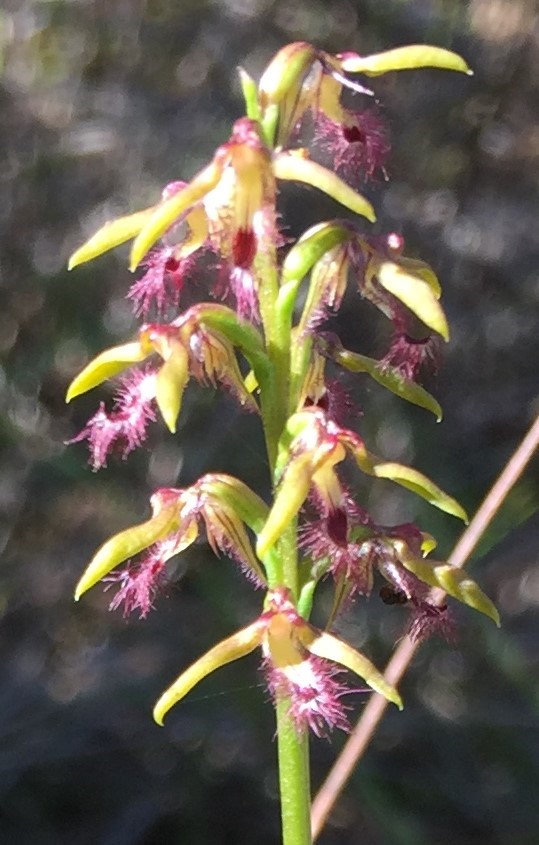
World Oceans Day: June 8
The United Nations celebrates World Oceans Day every year on 8 June. Many countries have celebrated this special day since 1992, following the United Nations Conference on Environment and Development, held in Rio de Janeiro.
In 2008, the United Nations General Assembly decided that, as of 2009, 8 June would be designated by the United Nations as “World Oceans Day”.
Every June 8th, we have an opportunity to raise global awareness of the benefits humankind derives from the ocean and our individual and collective duty to use its resources sustainably. Future generations will also depend on the ocean for their livelihoods.
Aquariums, science centres and research institutions, NGOs, communities and governments all around the world mobilise millions of people around events big and small.
Together with the United Nations Family let’s celebrate all that the ocean gives us every day: from the oxygen we breathe to the inspiration that moves our poets.
The theme this year is 'Innovation for a Sustainable Ocean'
More here: https://unworldoceansday.org/
$1.5 Million In NSW Government Grants To Stop And Clean Up Illegal Dumping
June 2, 2020
The NSW Government is encouraging councils, public land managers and community groups to apply for grants to tackle illegal dumping in their local area.
The grants are a part of the NSW Combating Illegal Dumping Clean-up and Prevention program which has awarded $6.7 million to projects to combat illegal dumping since the program commenced.
Executive Director, Circular Economy & Resource Management, Sanjay Sridher said illegally dumped waste can harm our health, pollute the environment and cost millions of dollars in taxpayers money each year to clean up.
“We want to see as many applicants as possible apply for funding, with previous grants being put to great use to tackle local dumping hotspots,” Mr Sridher said.
“This has included the installation of gates, signs, surveillance cameras and fencing to tackle illegal dumping along with the removal of thousands of tonnes of illegally dumped waste.
“I encourage any councils, public land managers or community groups that want to tackle an illegal dumping problem in their area to visit the website and apply for one of these grants.
“The grant program is funded under the Waste Less Recycle More initiative, administered by the NSW Department of Planning, Industry an Environment.”
The grants can be used by councils, public land managers and community groups to implement prevention and clean-up action on publicly managed land or to establish illegal dumping baseline data.
Applications for grants will close on the 17th July 2020.
Applicants are able to apply for funding under three streams;
Option 1
$50,000 - $120,000 for councils and public land managers to carry out illegal dumping clean-up and prevention projects.
Option 2
Up to $20,000 for councils and public land managers to establish illegal dumping baseline data.
Option 3
Up to $50,000 for illegal dumping clean-up and prevention community partnerships.
More information about the NSW Combating Illegal Dumping Clean-up and Prevention program is available at https://www.epa.nsw.gov.au/working-together/grants/illegal-dumping/illegal-dumping-clean-prevention.
Household Chemical CleanOuts Back
Mona Vale Beach Car Park, Surfview Road, Mona Vale
Sat 20, Sun 21 June 2020: 9am - 3:30pm
Household Chemical CleanOut events are returning to your neighbourhood after a break because of COVID-19.
The free service, run jointly by the NSW Department of Planning, Industry and Environment and local councils, provides a safe way to dispose of potentially hazardous household items such as paint, oils and cleaning products.
The return of these events is a welcome addition to the calendar for the NSW community, with many people using their recent spare time to de-clutter the house and garage. Any problem wastes discovered while de-cluttering can now be disposed of for free at a Household Chemical CleanOut.
You can take household quantities of many chemicals and items – up to a maximum of 20 litres or 20 kilograms of a single item – to a CleanOut event, including:
- Car and household batteries
- Fire extinguishers
- Gas bottles
- Smoke detectors
- Acids and alkalis
- Pesticides and herbicides
- Paint
- Batteries
- Oils
- Pool chemicals
- Fluorescent globes and tubes, and more
The events re-start this Saturday 30 May at Glendale TAFE, followed by Meadowbank, Nowra, Mona Vale, Rutherford, Leumeah, Katoomba and Heffron Park, Matraville in coming weeks.
See the EPA website for information about individual events, for dates, times and other details including locations, with more events being added regularly.
Due to COVID-19 there are new protocols that participants need to be aware of:
Before you attend a Chemical CleanOut event, please place all materials in the rear of your vehicle. On arrival, remain in your vehicle and our contractor will collect your items. Contractors onsite will be wearing personal protective equipment and following social distancing measures.
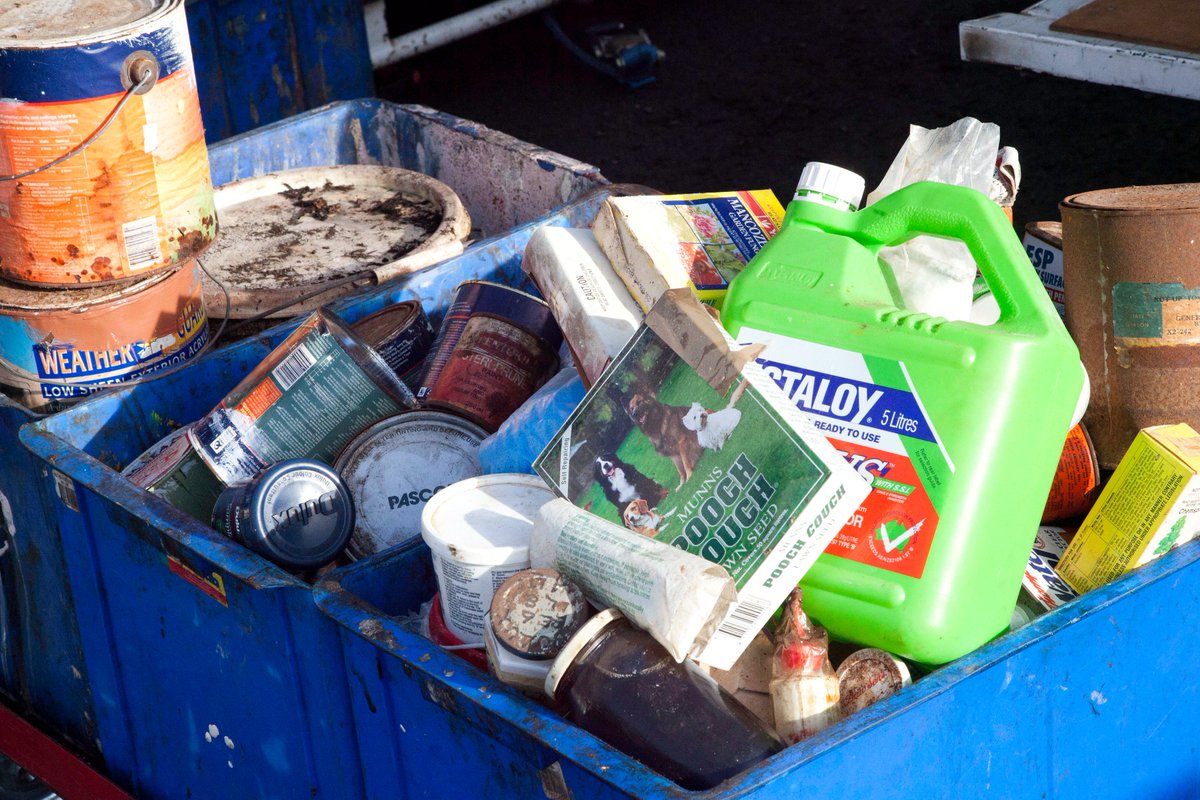
Fishing In Sanctuary Zones Not Tolerated
June 3, 2020
A man has been ordered to pay a fine and court costs following his apprehension for illegally fishing in a Sanctuary Zone on the NSW Central Coast, NSW DPI Acting Fisheries Compliance Director, Dr Andrew Moriarty, said today.
“NSW Department of Primary Industries (NSW DPI) Fisheries Officers from the Port Stephens District apprehended the man following a patrol of the Little Beach area,” Dr Moriarty said.
“The man was identified as fishing off Nelson Head, this area is within the Fly Point Corrie Island Sanctuary Zone of the Port Stephens – Great Lakes Marine Park, in which harming or attempting to harm animals is deemed to be a serious offence under the Marine Estate Management Act 2014.
“The officers intervened and spoke to the fisher who was in possession of two snapper illegally taken, with one being of prohibited size. The catch was seized by Fisheries Officers and the fisher was issued a $500 penalty notice.
“The fisher elected to have the matter heard in court, and subsequently the penalty was increased to $700. The man was also made to pay an additional $1,400 in court costs.
“Sanctuary Zones provide for the highest level of protection and only allow for activities that do not involve harming any animal or plant or causing any damage to or interference with natural or cultural features or habitat.”
Regulations under the Marine Estate Management Act 2014 are in force to protect and maintain a biologically diverse, healthy and productive marine estate.
Fisheries Officers patrol marine parks day and night, on weekdays, weekends, and public holidays to ensure everyone is following the rules.
People found fishing in sanctuary zones can expect to be caught and heavy penalties of up to $22,000 for each breach handed down. The seizure of a fishers catch as well as fishing gear, vehicles and boats can also apply.
Information regarding marine parks is freely available at local boat ramps, through phone applications (FishSmart NSW and Avenza), on DPI’s website, at tackle stores and local fisheries offices - really there are no excuses for not keeping up-to-date with the rules in your fishery.
“Make yourself aware of the rules before heading out or face the consequences,” Dr Moriarty said.
Report illegal fishing online or via the Fishers Watch phone line on 1800 043 536 and find information on marine parks.
Campaign To Stop Sediment Runoff As Building And Home Renovations Increase
June 1, 2020
The Get the Site Right campaign in June will increase awareness of the dangers of runoff from building sites impacting the environment and encourage developers, builders and home renovators to implement appropriate erosion and sediment controls.
The campaign is kicking off in response to an increase in home renovation and DIY projects during the COVID-19 isolation period as well as several large construction projects that are expected to commence in coming months.
Developments of all sizes will be monitored by councils and the NSW Environment Protection Authority (EPA) as part of the month-long campaign.
Get the Site Right is a joint program between the Parramatta River Catchment Group (PRCG), Cooks River Alliance, Georges Riverkeeper, Sydney Coastal Councils Group, Lake Macquarie Council, NSW Environment Protection Authority (EPA), Department of Planning, Industry and Environment, and local councils. It is in its fifth year.
Environment Minister Matt Kean said that regardless of the project size, implementing proper erosion and sediment controls is key to protecting our waterways.
“Whether you’re a home renovator who’s laying new paving or a developer building a 20-storey apartment block, it’s important that you prevent runoff from leaving your site,” Mr Kean said.
“When sediments such as sand or soil and other building materials are washed down stormwater drains and into our waterways, it not only degrades water quality it can destroy aquatic habitats by smothering native plants and animals that live there.
“It also can block stormwater drains leading to flooding and overflows.”
PRCG Chair Cr Mark Drury said that builders and home renovators can’t afford to be complacent about the impacts of site runoff.
“Builders and renovators need to be aware that their actions can have a significant impact on the health of our local rivers and creeks. Get the Site Right is an important part of our ongoing strategy to manage the environmental impacts of construction to help achieve our mission to make the Parramatta River swimmable again by 2025,” Cr Drury said.
“Every building site, regardless of size, must ensure they have controls in place to help improve river health for the entire community and the benefit of the environment.”
Sediment spills affect our environment and waterways by:
- Destroying aquatic habitats and smothering native plants and animals that live in our waterways.
- Directly polluting creeks, rivers and harbours by filling them with dirt, soil, sand and mud. This leads to poorer water quality, affecting swimming or leisure activities in and around our waterways.
- Blocking stormwater drains leading to flooding and overflows.
- Eroding creek and riverbanks.
Members of the public can report poor sediment control on building sites to their local council or to the EPA’s 24/7 Environment Line on 131 555.
More information about the campaign and the importance of erosion and sediment control is available at: https://www.ourlivingriver.com.au/help-the-river/getthesiteright/
Tarrawonga Coal Fined After Environmental Breach At Mine
May 28, 2020
The NSW Environment Protection Authority has fined Tarrawonga Coal Mine $15,000 after an alleged breach of its environment protection licence when a sediment dam failed at its mine near Boggabri.
EPA Manager Regional Operations Lindsay Fulloon said sediment dams are an important part of the pollution control system and they need to be maintained to ensure they work effectively.
“A sediment dam wall breached during heavy rain in February this year, causing sediment-laden water to discharge onto a neighbouring coal mine. Fortunately, the water was contained on this neighbouring site and did not make it to any waterways.
“EPA investigations show that the mine did not have a maintenance plan for the dam in place, including an inspection schedule which could have helped identify the emerging structural failings,” Mr Fulloon said.
Tarrawonga Coal Mine uses sedimentation dams to hold and treat sediment-laden water generated during mine operations to prevent sediment discharging into the environment.
The company is revising its maintenance plans to ensure that this incident does not reoccur.
Penalty notices are one of a number of tools the EPA can use to achieve environmental compliance including formal warnings, official cautions, licence conditions, notices and directions and prosecutions. In this instance the EPA issued a penalty notice. The notice recipient may pay the penalty notice, seek a review, or elect to have the matter determined by a court.
For more information about the EPA’s regulatory tools, see the EPA Compliance Policy at www.epa.nsw.gov.au/legislation/prosguid.htm
_____________________________________________________________________________________
Current Consultation:
Tarrawonga Coal Mine
MOD 7 - Life of Mine
Changes to ROM coal production rate, size of open cut pit, and post mining landform; and construction and operation of water supply pipeline
Submissions Open until June 8, 2020 HERE
Government Condemned For Voting Down CSG Moratorium Bill
June 4, 2020
The Berejiklian and Barilaro Government’s decision to vote down the CSG Moratorium Bill under extraordinary circumstances shows it has abandoned farmers and rural communities, according to Lock the Gate Alliance.
Independent MP Justin Field’s Bill passed the Upper House overnight, only for the Berejiklian Government to break with normal process and bring the Bill forward to use its majority in the Lower House to vote it down.
The Government came under criticism in the parliament for failing to implement the recommendations of the Chief Scientist for managing the risks of coal seam gas, which prompted the passage of the Bill in the Upper House last night to pause the industry while protections and data collection are put in place.
Narrabri renewable energy consultant Rohan Boehm said the government’s rejection of the Bill was a kick in the guts for locals who had spent the past decade struggling with the twin threats of the drought and Santos’ Narrabri gas project.
“We know that renewable energy, wind, solar, and bioenergy are the perfect fit for north west NSW and Narrabri in particular,” he said.
“With major new infrastructure developments coming through we urgently need a whole suite of brand new industries based on low cost and abundant energy. That’s what renewables will do and at a much cheaper price than what coal seam gas could ever do for the people of the north west and the state.
“The Narrabri Gas project will immediately become an abandoned project because it simply cannot compete in the energy market - the gas is far too expensive, it will never add any value to the region and will add no value to NSW.”
Lock the Gate Alliance spokesperson and Mullaley farmer Margaret Fleck said the Berejiklian Government and in particular its National Party members had betrayed rural people.
“We applaud the efforts of our local member Roy Butler who is listening to and representing the people of Barwon and Justin Field who brought this bill to the parliament. We also thank the Labor Party, Greens and Animal Justice Party for supporting the passage of the bill,” she said.
“It is deeply troubling that, at a time when we are still struggling with the impacts of an unprecedented drought, the government would put our scarce water resources at further risk by encouraging the polluting and risky coal seam gas industry.
“Santos’ plan to drill 850 coal seam gas wells through farmland and the Pilliga Forest is a serious threat to a Great Artesian Basin water recharge zone.
“It is also greatly troubling the Berejiklian Government has gone so far out of its way to bring forward this debate and vote down this Bill when it can’t even implement all of the Chief Scientist’s recommendations on managing the risky CSG industry.
“The Berejiklian Government has spectacularly failed to deliver its promise and implement these recommendations. With the rejection of this Bill, it has now utterly sold out the bush.”
Matt Canavan says Australia doesn't subsidise the fossil fuel industry, an expert says it does
Jeremy Moss, UNSWQueensland Nationals Senator Matt Canavan on Monday night denied suggestions the government subsidises Australia’s fossil fuel industry. The comments prompted a swift response from some social media users, who cited evidence to the contrary.
Canavan was responding to a viewer question on ABC’s Q&A program. The questioner cited an International Monetary Fund (IMF) working paper from May last year that said Australia spends US$29 billion (A$47 billion) a year to prop up fossil fuel extraction and energy production.
The questioner also referred to media reports last year that Australia subsidised renewable energy to the tune of A$2.8 billion. He questioned the equity of the subsidy system.
Canavan disputed the figures and said there was “no subsidisation of Australia’s fossil fuel industries”. You can listen here:
So let’s take a look at what the Australian government contributes to the fossil fuel industry, and whether this makes financial sense.
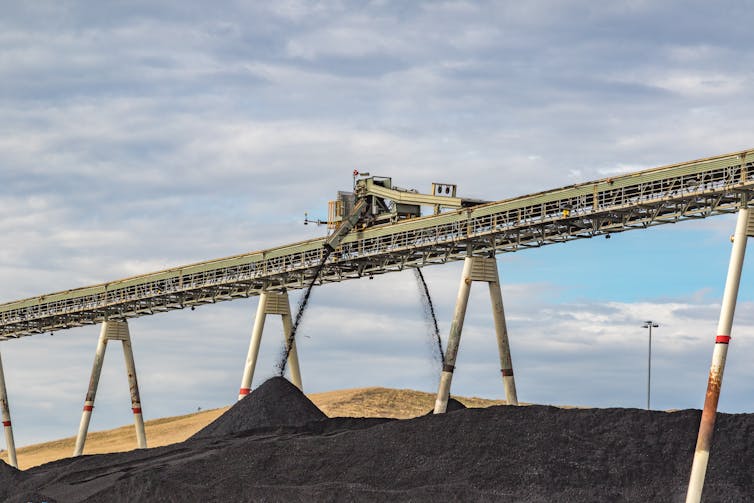
What Does Australia Contribute To The Fossil Fuel Industry?
Canavan said the figures cited by the questioner didn’t accord with the view of the Productivity Commission.
The commission’s latest Trade and Assistance Review doesn’t specifically mention federal subsidies. But it describes “combined assistance” for petroleum, coal and chemicals in mining of about A$385 million for 2018-19.
Subsidies to fossil fuel companies and other products can be difficult to categorise. Often there is disagreement as to what counts and what doesn’t.
For example, the IMF paper includes subsidising the costs of fuels used to extract resources, accelerated depreciation for assets and funding for fossil fuel export projects.
Read more: Morrison government dangles new carrots for industry but fails to fix bigger climate policy problem
Estimates by other organisations of the annual federal subsidies for the fossil fuel industry range from A$5 billion to A$12 billion a year.
So despite the disparities, it’s clear the fossil fuel industry receives substantial federal government subsidies. Earlier this month a leaked draft report by a taskforce advising the government’s own COVID-19 commission recommends support to a gas industry expansion.
Importantly, these subsidies benefit the fossil fuel industry relative to its competitors in the renewable sector.
Do These Payments Make Sense?
The subsidies are also aimed at a sinking industry.
As Tim Buckley, of the Institute for Energy Economics and Financial Analysis, notes, COVID-19 and the falling cost of renewables are delivering a hit to the export fossil fuel industry in Australia from which it may never recover.
Fossil fuel companies such as Santos are also under extreme pressure from some super funds to adopt strict emissions targets.
Moreover, these subsidies produce very few direct jobs in fossil fuel extraction.
According to the Australian Bureau of Statistics, coal, oil and gas extraction create just 64,300 direct jobs. Only around 10% of coal industry employees are women.
If we divide the IMF subsidy figure by the number of direct jobs, the governments of Australia spend A$730,000 each year for every direct job in the coal, oil and gas industry. That equates to A$1,832 for every Australian.
Where Are The Profits?
Setting aside the madness of this support for fossil fuels given the climate crisis, the subsidies make no financial sense.
With so much government support, you’d think the industry would be full of profitable companies filling the government’s coffers with taxes. But this is not the case.
Australian Taxation Office data for 2016-17 show eight of the ten largest fossil fuel producers in Australia paid no tax. That’s despite nine of these companies having revenue of about A$45 billion for that period.
Not all of these benefits go to these big producers, but many of them do.
If Prime Minister Scott Morrison really wants to lessen the impact of the coronavirus on Australians and save jobs, then this gross level of subsidies must be phased out.

Money Needed Elsewhere
Subsidies paid each year to the fossil fuel industry could be used far better elsewhere.
It could help retrain or provide generous redundancy packages for the relatively small number of workers in fossil fuel industries and their communities.
Read more: Yes, carbon emissions fell during COVID-19. But it's the shift away from coal that really matters
The subsidies are unconscionable when you consider the resources so desperately needed now for health and the broader economy. The coronavirus must force us as a country to re-evaluate how we distribute taxpayer funds.
As International Energy Agency head Fatih Birol notes, we now have an “historic opportunity” to use stimulus to transition to clean energy.
Directing funds to companies that have had 30 years to prepare for their demise is simply throwing away public money. It could be put to so much better use.![]()
Jeremy Moss, Professor of Political Philosophy, UNSW
This article is republished from The Conversation under a Creative Commons license. Read the original article.
High Court decision today on the long legal battle over New Acland Coal mine expansion
Justine Bell-James, The University of QueenslandAfter years of litigation, Australia’s highest court will today make a major decision on the fate of the controversial proposed expansion to the New Acland Coal mine in Queensland.
A so-called “special leave application”, if successful, may eventually see the matter sent back to Queensland’s Land Court for a new hearing.
If the application fails, the mine expansion is one big step closer to proceeding, with only a few approvals left to obtain.
If approved, the project will have serious ramifications for prime agricultural land and groundwater in the region. As one opponent, Oakey Coal Action Alliance (OCAA) secretary Paul King, has said:
We believe it is really crucial that these important matters are tested in court, because once groundwater is lost it’s most likely lost forever.
Today’s ruling will also have ramifications for the law of apprehended bias, which is a perception by a fair observer that a “judge might not bring an impartial mind to the resolution of the question the judge is required to decide”.
The Proposed Coal Mine
The New Acland Coal mine is located on Queensland’s Darling Downs about 170km west of Brisbane and just north-west of Toowoomba.
The mine began operating in 2002 and a decade later was producing more than 5 million tonnes of thermal coal each year.
New Acland Coal is now seeking approval for stage 3 of the mine, which would produce 9 million tonnes of coal per year from new pits to the south of the existing mine.
The mine sits in the middle of prime agricultural land. Farmers and the community are deeply concerned the proposed expansion will have serious impacts including groundwater depletion, noise, air quality, visual amenity, soil damage, social disruption and land values. It will also absorb the town of Acland.
After some scaling down, the Queensland Labor government issued a draft environmental authority for the project in 2015. Commonwealth approval followed in 2017.
The Start Of Litigation – The Land Court
A large group of farmers and residents, including OCAA, took their objections to the draft environmental authority and mining lease to Queensland’s Land Court.
These objections were heard together in 2016 in a mammoth 100-day hearing, the longest in the 120-year history of the court. In an equally mammoth recommendation spanning almost 2,000 paragraphs, then Land Court member Paul Smith recommended the mining lease and environmental authority be rejected.
Not all the objections succeeded. Smith based his refusal on groundwater modelling inadequacies, make-good arrangements for landholders, noise impacts and agricultural impacts.
Judicial Review – The Supreme Court
New Acland Coal applied for judicial review of Smith’s recommendation on 15 initial grounds. One of these was apprehended bias.
The apprehended bias allegations included that Smith threatened contempt of New Acland Coal staff during the hearing, questioned their motives, rejected evidence without a genuine basis and assisted the objectors with their arguments.
During the hearing, there was a lot of focus on comments made by New Acland Coal in the media regarding delays in the Land Court. It was suggested Smith had taken personal offence to these statements.
The claim succeeded in 2018 on several grounds, mainly related to groundwater. In particular, Justice Helen Bowskill found the Land Court does not have jurisdiction to consider groundwater issues. The apprehended bias allegation did not succeed at this stage.
The Rehearing In The Land Court
The matter was sent back to the Land Court for a limited rehearing, on the issues New Acland Coal succeeded on before the Supreme Court. Land Court president Fleur Kingham in November 2018 recommended approval of the mining project.
This was perhaps a reluctant recommendation, given the hearing was necessarily limited in scope. As Kingham said, a full rehearing would have allowed her to consider issues such as New Acland Coal’s past environmental performance in greater detail.
Appeal And Cross-Appeal
This is where is gets complicated. While waiting for the Land Court rehearing, OCAA appealed against Justice Bowskill’s decision to the Court of Appeal in May 2018. New Acland Coal cross-appealed over the finding of no apprehended bias.
In September 2019, the Court of Appeal dismissed OCAA’s arguments, but upheld New Acland Coal’s argument that apprehended bias had affected the original Land Court recommendation.
A finding of apprehended bias would generally result in the matter being sent back to the original court or tribunal for a fresh hearing before an independent person.
By this stage, a fresh hearing was not in New Acland Coal’s interests, as it already had a favourable result from the Land Court. However, a fresh hearing would be an opportunity for OCAA to test its arguments before a new Land Court member.
Fortunately for the mining company, the Court of Appeal did not order a rehearing. Instead, the court held the recommendations of Kingham and the findings of Justice Bowskill should stand.
Application For Special Leave To Appeal
It is perhaps surprising the Court of Appeal found apprehended bias, but did not order a fresh hearing.
Read more: Rio Tinto just blasted away an ancient Aboriginal site. Here’s why that was allowed
On this basis, OCAA applied to the High Court of Australia for special leave to appeal the decision. If it succeeds in seeking special leave – and is then successful in a hearing before the High Court – the matter will go back to the Land Court for an entirely new hearing on all the facts and issues.
If the application is unsuccessful, the Court of Appeal’s decision will stand. The controversial mine expansion will have officially cleared a major hurdle and be closer to proceeding.
Today’s decision is being closely watched. It may have broad ramifications for future decisions involving apprehended bias. And it could have devastating consequences for farmers and landholders, as well as their land and groundwater supplies.![]()
Justine Bell-James, Associate Professor, TC Beirne School of Law, The University of Queensland
This article is republished from The Conversation under a Creative Commons license. Read the original article.
Let's fix Australia's environment with any pandemic recovery aid – the Kiwis are doing it
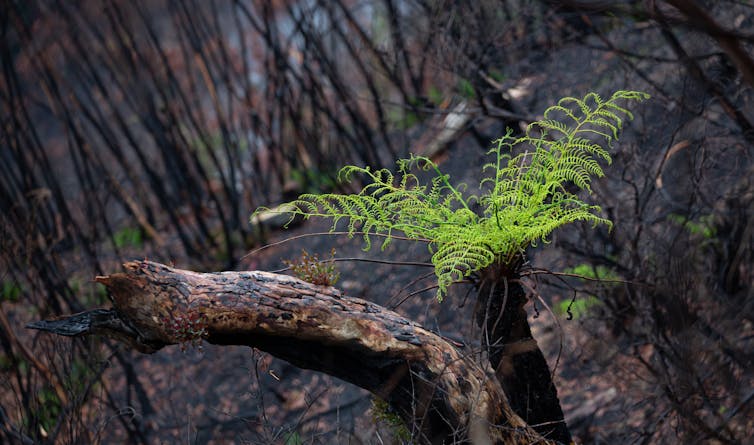
The COVID-19 pandemic is causing significant economic challenges for Australia. With April figures showing more than 800,000 people unemployed and last month 1.6 million on JobSeeker payments, a key focus will be job creation.
Read more: The big stimulus spending has just begun. Here's how to get it right, quickly
Lessons should be learned from what’s happening in New Zealand, where the government is funding projects that revive the environment. Unfortunately, Australia seems to be going the other way.
New Zealand Gets It
As part of New Zealand’s innovative Wellbeing Budget the government will invest NZ$50 billion in a direct COVID-19 recovery response.
Of that, NZ$1.1 billion will be spent on creating 11,000 “nature jobs” to combat unemployment and supplement pandemic-affected sectors.
This unique investment will be delivered in a number of targeted environmental programs.
These include NZ$433 million for regional environmental projects that will provide 4,000 jobs in conserving and managing waterways. This will help restore fragile ecosystems such as wetlands, rivers and catchments.
There’s NZ$315 million for weed and feral animal control, including possums, pigs, deer and wallabies. This will provide employment through partnerships between the community, Māori land managers and government departments.
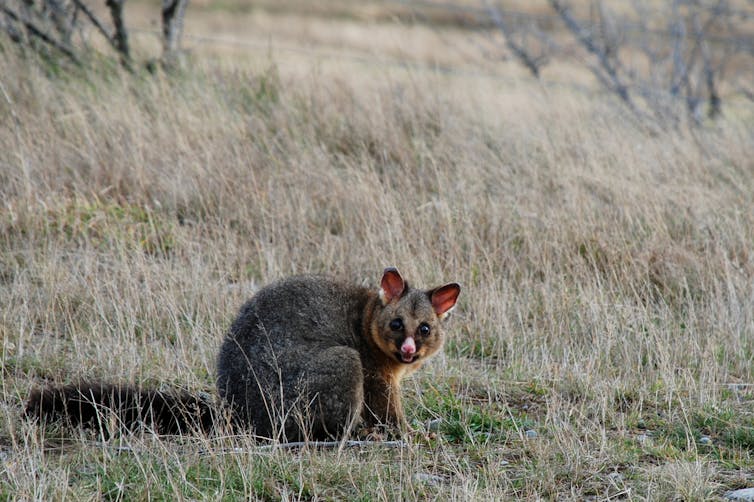
A further NZ$200 million will deliver jobs on public conservation land through the Department of Conservation for various management actions. These include predator control, restoration, regenerative planting and maintenance of tracks, huts and other assets.
Some of these investments will not only provide jobs but also conserve New Zealand’s environment. They will maintain agricultural productivity and advance existing environmental initiatives such as Predator Free New Zealand.
They will also provide households with income that will in turn help stimulate local economies.
This is a win for New Zealand’s environment and wildlife, particularly native fish species and unique birds. It’s also a win for people and the economy.
Australia’s Destructive COVID-19 Recovery
In contrast, the Australian federal and some state governments have resorted to environmentally destructive projects and policies to stimulate economic activity and support employment.
For example, the New South Wales government in March granted approval to extend coalmining under Sydney’s Woronora reservoir and in May approved the controversial Snowy Hydro 2.0 project.
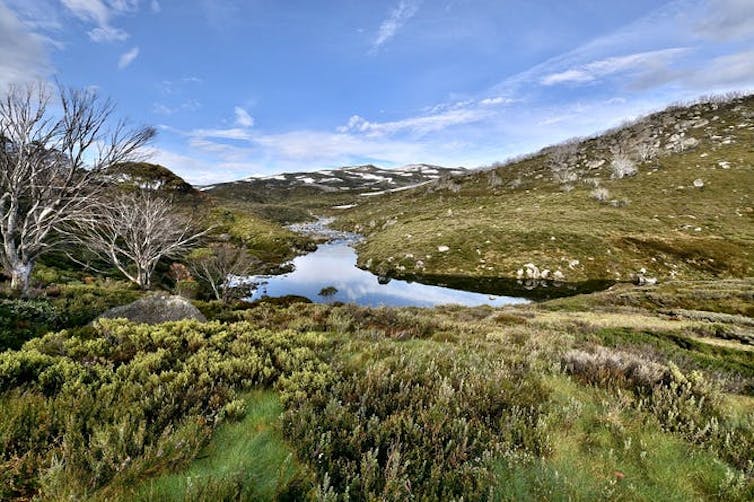
In Victoria, the government delayed key improvements to environmental protection laws and amended legislation to allow onshore gas extraction.
Federally, wider plans exist for an apparent fossil-fuel-led national recovery through gas expansion, fast-tracked by relaxing environmental regulations. This includes a proposed exemption from additional approvals under the Environment Protection and Biodiversity Conservation Act.
The relaxing of environmental legislation and protections (commonly referred to as cutting “green tape”) has been pushed by business and industry lobby groups and some quarters of the media.
Even politicians such as federal Environment Minister Sussan Ley see it as a way to promote economic recovery.
A Better Way To Recovery
Nature groups, environmental scientists, economists and political parties such as the Greens are proposing an alternative approach.
Some state and territory departments, including in the ACT and the Northern Territory, recognise environmental management and protection as a source of high employment opportunity.
They all see investment in conservation and land management as a key feature of any economic recovery.
An Opportunity For Australia
Economic stimulus through conservation and land management is not yet recognised as a way for Australia to respond to both the COVID-19 crisis and long-standing conservation needs.
Australian governments, if they invested similarly to New Zealand, could create jobs in the short term in any desired target region, based on economic and environmental need.
This flexibility would allow jobs to be created in regions with already fragile local economies, particularly those made worse by COVID-19. This includes regional areas that usually have high tourism, bushfire-affected communities, drought-affected regions, as well as Indigenous communities.
Read more: When introduced species are cute and loveable, culling them is a tricky proposition
Conservation and land management jobs could include dealing with feral pests, such as cats, foxes, rabbits, pigs, deer and horses.
It could feature restoration activities such as tree planting, weed removal, hazard-reduction burning, and wildlife restoration and monitoring.
This type of employment is hands-on, labour-intensive and has low overhead costs. Investment is likely to be cost-effective, with most of it going straight to the worker.
Let’s Stimulate The Economy And The Environment
Projects can be up and running quickly, so the economic stimulus is immediate.
The benefits of direct household stimulus are well understood. This form of spending provides localised economic benefits as money is likely to stay in the local community.
Read more: The next global health pandemic could easily erupt in your backyard
There is an opportunity to support the hard-hit university sector. It could get funds for research to design, monitor and assess the effectiveness of any interventions.
Such investment would have lasting and much-needed environmental benefits through the conservation of landscapes recently ravaged by bushfire that contain unique and declining wildlife species.
Could the much-hyped “new normal” be one where Australia’s environment and economy are not seen as incompatible?![]()
Lachlan G. Howell, PhD Candidate | School of Environmental and Life Sciences, University of Newcastle; John Clulow, Associate Professor, University of Newcastle; John Rodger, Emeritus Professor, University of Newcastle & CEO FAUNA Research Alliance, University of Newcastle, and Ryan R. Witt, Conjoint Lecturer | School of Environmental and Life Sciences, University of Newcastle
This article is republished from The Conversation under a Creative Commons license. Read the original article.
Please Help Sydney Wildlife Rescue: Donate Your Cans And Bottles And Nominate SW As Recipient
You can Help Sydney Wildlife help Wildlife. Sydney Wildlife Rescue is now listed as a charity partner on the return and earn machines in these locations:
- Pittwater RSL Mona Vale
- Northern Beaches Indoor Sports Centre NBISC Warriewood
- Woolworths Balgowlah
- Belrose Super centre
- Coles Manly Vale
- Westfield Warringah Mall
- Strathfield Council Carpark
- Paddy's Markets Flemington Homebush West
- Woolworths Homebush West
- Bondi Campbell pde behind Beach Pavilion
- Westfield Bondi Junction car park level 2 eastern end Woolworths side under ramp
- UNSW Kensington
- Enviro Pak McEvoy street Alexandria.
Every bottle, can, or eligible container that is returned could be 10c donated to Sydney Wildlife.
Every item returned will make a difference by removing these items from landfill and raising funds for our 100% volunteer wildlife carers. All funds raised go to support wildlife.
It is easy to DONATE, just feed the items into the machine select DONATE and choose Sydney Wildlife Rescue. The SW initiative runs until August 23rd.
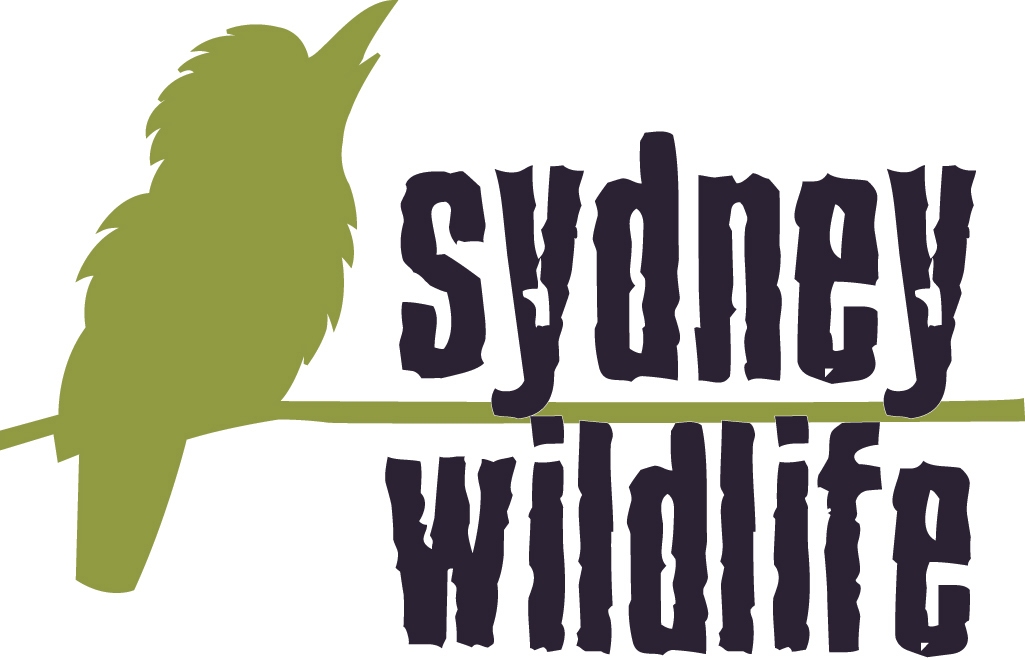
Latest Climate Models Show More Intense Droughts To Come
June 2, 2020
An analysis of new climate model projections by Australian researchers from the ARC Centre of Excellence for Climate Extremes shows southwestern Australia and parts of southern Australia will see longer and more intense droughts due to a lack of rainfall caused by climate change.
But Australia is not alone. Across the globe, several important agricultural and forested regions in the Amazon, Mediterranean and southern Africa can expect more frequent and intense rainfall droughts. While some regions like central Europe and the boreal forest zone are projected to get wetter and suffer fewer droughts, those droughts they do get are projected to be more intense when they occur.
The research published in Geophysical Research Letters examined rainfall-based drought using the latest generation of climate models (known as CMIP6), which will inform the next IPCC assessment report on climate change.
"We found the new models produced the most robust results for future droughts to date and that the degree of the increase in drought duration and intensity was directly linked to the amount of greenhouse gases emitted into the atmosphere," said lead author Dr Anna Ukkola.
"There were only slight changes to the areas of drought under a mid-range emissions scenario versus a high-emissions pathway. However, the change in the magnitude of drought with a higher emissions scenario was more marked, telling us that early mitigation of greenhouse gases matters."
Much of the earlier research into future droughts only considered changes to average rainfall as the metric to determine how droughts would alter with global warming. This often produced a highly uncertain picture.
But we also know that with climate change, rainfall is likely to become increasingly variable. Combining metrics on variability and mean rainfall, the study increased clarity around how droughts would change for some regions.
The researchers found the duration of droughts was very closely aligned to changes in the average rainfall, but the intensity of droughts was much more closely connected to the combination of average rainfall and variability. Regions with declining average rainfall like the Mediterranean, Central America and the Amazon are projected to experience longer and more frequent droughts. Meanwhile, other regions, such as the boreal forests are expected to experience shorter droughts in line with increasing average rainfall.
However, the situation is different for drought intensity alone with most regions projected to experience more intense rainfall droughts due to increasing rainfall variability. Importantly, the researchers were unable to locate any region that showed a reduction in future drought intensity. Even regions with long-term increases in rainfall, such as central Europe, can expect more intense droughts as rainfall becomes more variable.
"Predicting future changes in drought is one of the greatest challenges in climate science but with this latest generation of models and the opportunity to combine different drought metrics in a more meaningful way we can gain a clearer insight into the future impacts of climate change," said Dr Ukkola.
"However, while these insights grow clearer with each advance, the message they deliver remains the same -- the earlier we act on reducing our emissions, the less economic and social pain we will face in the future."
Anna M. Ukkola, Martin G. De Kauwe, Michael L. Roderick, Gab Abramowitz, Andrew J. Pitman. Robust future changes in meteorological drought in CMIP6 projections despite uncertainty in precipitation. Geophysical Research Letters, 2020; DOI: 10.1029/2020GL087820
Back from extinction: a world first effort to return threatened pangolins to the wild
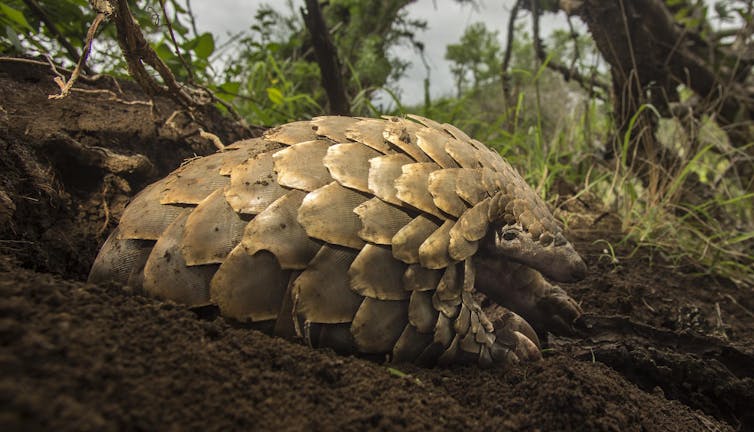
Pangolins are one of the most illegally trafficked animals on the planet and are suspected to be linked to the current coronavirus pandemic.
Pangolins are also one of the world’s most threatened species but new efforts are underway to reintroduce pangolins to parts of Africa where the animal has been extinct for decades.
Read more: What Australian birds can teach us about choosing a partner and making it last
The reintroduction of pangolins has not been easy. But it’s vital to prevent this shy, mysterious creature from being lost forever.
A Cute But Threatened Species
Pangolins are the only mammals wholly-covered in scales, which they use to protect themselves from predators. They can also curl up into a tight ball.
They eat mainly ants, termites and larvae which they pick up with their sticky tongue. They can grow up to 1m in length from nose to tail and are sometimes referred to as scaly anteaters.
But all eight pangolin species are classified as “threatened” under International Union for Conservation of Nature criteria.
There is an unprecedented demand for their scales, primarily from countries in Asia and Africa where they are used in food, cultural remedies and medicine.
Between 2017 and 2019, seizures of pangolin scales tripled in volume. In 2019 alone, 97 tons of pangolin scales, equivalent to about 150,000 animals, were reportedly intercepted leaving Africa.
There is further evidence of the illegal trade in pangolin species openly on social media platforms such as Facebook.
The intense global trafficking of the species means the entire order (Pholidota) is threatened with extinction. For example, the Temminck’s pangolins (Smutsia temminckii) went extinct in South Africa’s KwaZulu Natal Province three decades ago.
Reintroduction Of An Extinct Species
Each year in South Africa the African Pangolin Working Group (APWG) retrieves between 20 and 40 pangolins through intelligence operations with security forces.
These pangolins are often-traumatised and injured and are admitted to the Johannesburg Wildlife Veterinary Hospital for extensive medical treatment and rehabilitation before they can be considered for release.
In 2019, seven rescued Temminck’s pangolins were reintroduced into South Africa’s Phinda Private Game Reservein the KwaZulu Natal Province.
Nine months on, five have survived. This reintroduction is a world first for a region that last saw a viable population of this species in the 1980s.
During the release, every individual pangolin followed a strict regime. They needed to become familiar with their new surroundings and be able to forage efficiently.
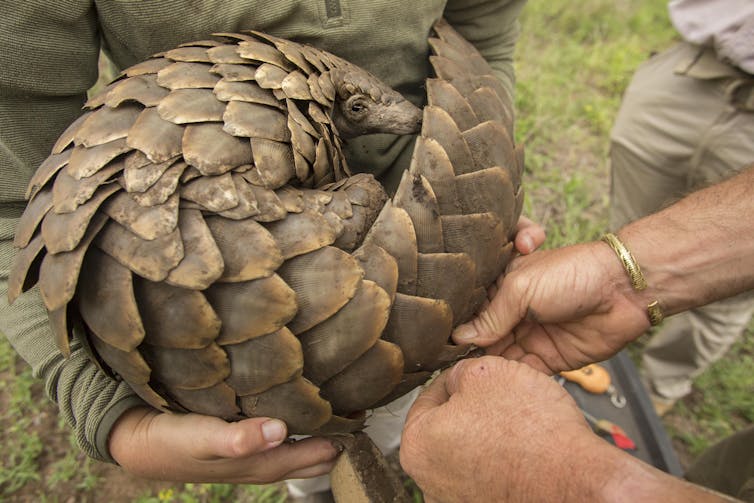
Previous releases, including early on in South Africa and in other countries such as the Philippines, the Democratic Republic of the Congo and Thailand had minimal post-release monitoring.
Pangolins released immediately following medical treatment had a low level of survival for various reasons, including inability to adapt to their release sites.
A ‘Soft Release’ In To The Wild
The process on Phinda game reserve involved a more gentle ease into re-wilding a population in a region that had not seen pangolins for many decades.
The soft release had two phases:
- a pre-release observational period
- an intensive monitoring period post release employing GPS satellite as well as VHF tracking tags.
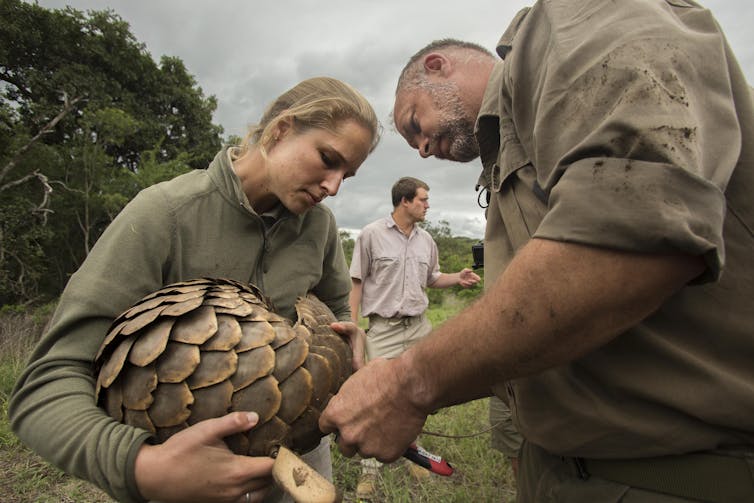
The pre-release period lasted between two to three weeks and were characterised by daily walks (three to five hours) of individuals on the reserves. These walks were critical for acclimatising individuals to the local habitat, its sounds, smells and possible threats. It also helped them source suitable and sufficient ant and termite species for food.
Following that, the post release period of two to three months involved locating released pangolins daily at first, and then twice per week where they were weighed, a rapid health assessment was made and habitat features such as burrows and refuges monitored.
Phinda reserve manager Simon Naylor said:
A key component of the post release period was whether individuals gained or maintained their weight.
The way the animals move after release also reveals important clues to whether they will stay in an area; if they feed, roll in dung, enter burrows. Much of this behaviour indicates site fidelity and habitat acceptance.
Read more: No, Aussie bats won’t give you COVID-19. We rely on them more than you think
Following nine months of monitoring and tracking, five of the seven survived in the region. One died of illness while the other was killed by a Nile crocodile.
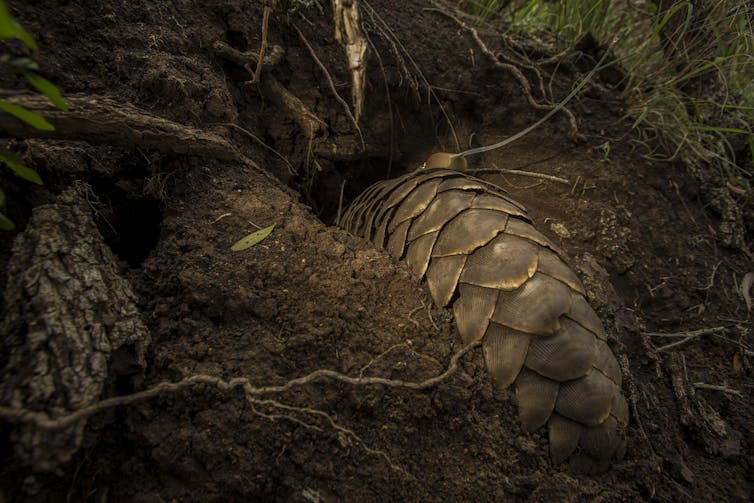
Why Pangolin Reintroduction Is Important
We know so little about this group of mammals that are vastly understudied and hold many secrets yet to be discovered by science but are on the verge of collapse.
The South African and Phinda story is one of hope for the Temminck’s pangolin where they once again roam the savanna hills and plains of Zululand.
The process of relocating these trade animals back into the wild has taken many turns, failures and tribulations but, the recipe of the “soft release” is working.![]()
Alexander Richard Braczkowski, Research Associate, Griffith University; Christopher O'Bryan, Postdoctoral Research Fellow, School of Earth and Environmental Sciences, The University of Queensland; Duan Biggs, Senior Research Fellow Social-Ecological Systems & Resilience, Griffith University, and Raymond Jansen, Professor: Zoology & Ecology, Tshwane University of Technology
This article is republished from The Conversation under a Creative Commons license. Read the original article.
ORRCA Art 2020 And ORRCA Census Day 2020
ORRCA stands for the Organisation for the Rescue and Research of Cetaceans in Australia. Put simply, our primary focus is the rescue, preservation, conservation and welfare of Whales, Dolphins, Seals and Dugongs in Australian waters.
ORRCA operates a 24/7 Rescue Hotline for the public to report any injured or stranded whales, dolphins, seals and dugongs. Simply call 02 9415 3333.
We are the only volunteer wildlife rehabilitation group in New South Wales licensed to be involved with marine mammal rescue, rehabilitation and release. Our members come from all walks of life, age groups and nationalities.
ORRCA offers the community one of the most experienced and successful whale, dolphin, seal and dugong rescue teams in Australia. We are also proud that today, we have rescue trained teams in Western Australia and Queensland available to support local authorities should a marine mammal incident arise.
All members within ORRCA are volunteers
We operate as a non-profit organisation and have charity status.
It is because of the generosity of the public providing donations, and the love and passion of people wanting to get involved and learn about these amazing animals, that ORRCA exists on its own two flippers today.
Through our ever growing membership base of valued and dedicated volunteers and our highly commended rescue training workshops coupled with the strength and dedication of the Committee, ORRCA has achieved extraordinary things over the past 34 years.
ORRCA operates a 24/7 Rescue Hotline for the public to report any injured or stranded whales, dolphins, seals and dugongs. Simply call 02 9415 3333.
Visit: http://www.orrca.org.au/
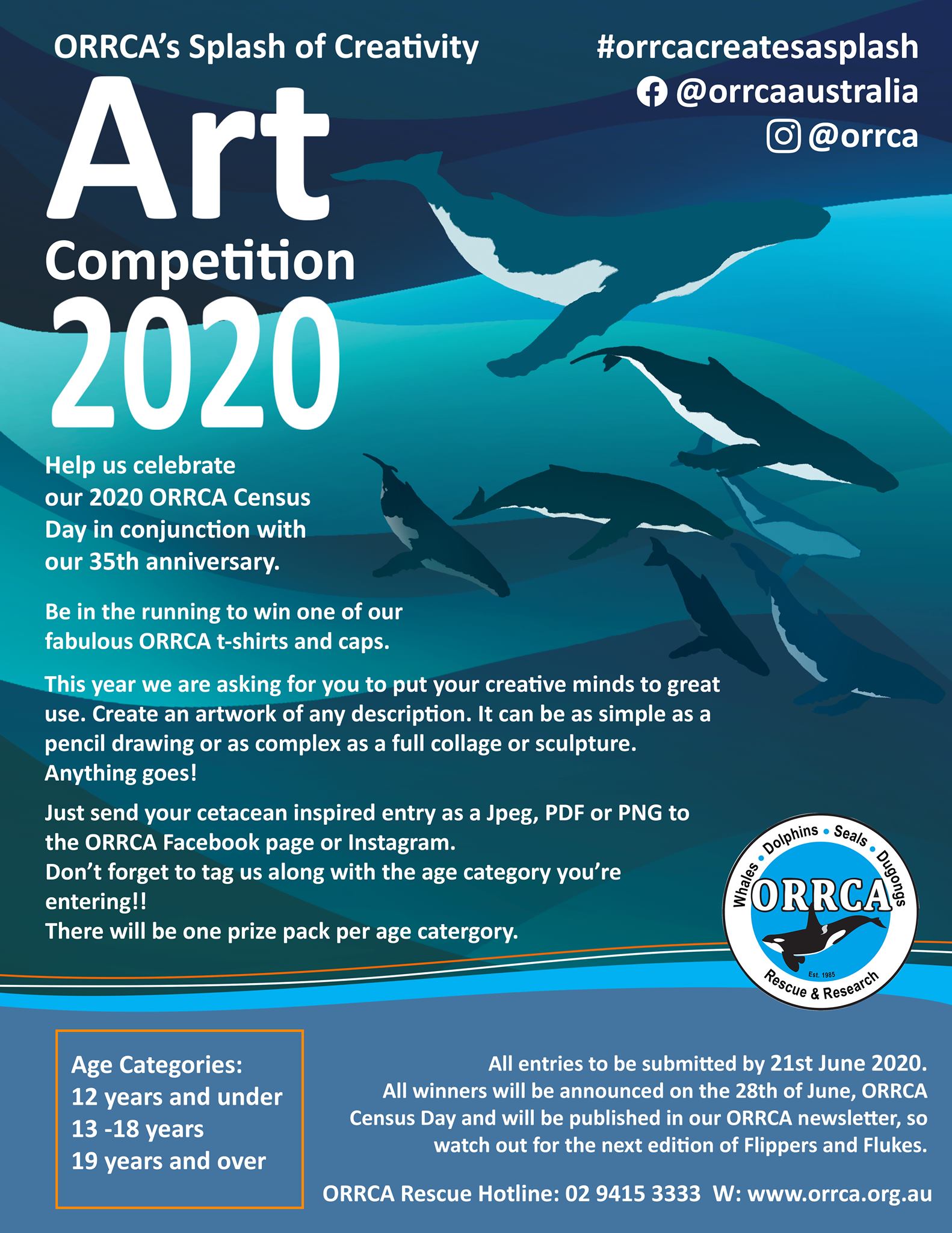
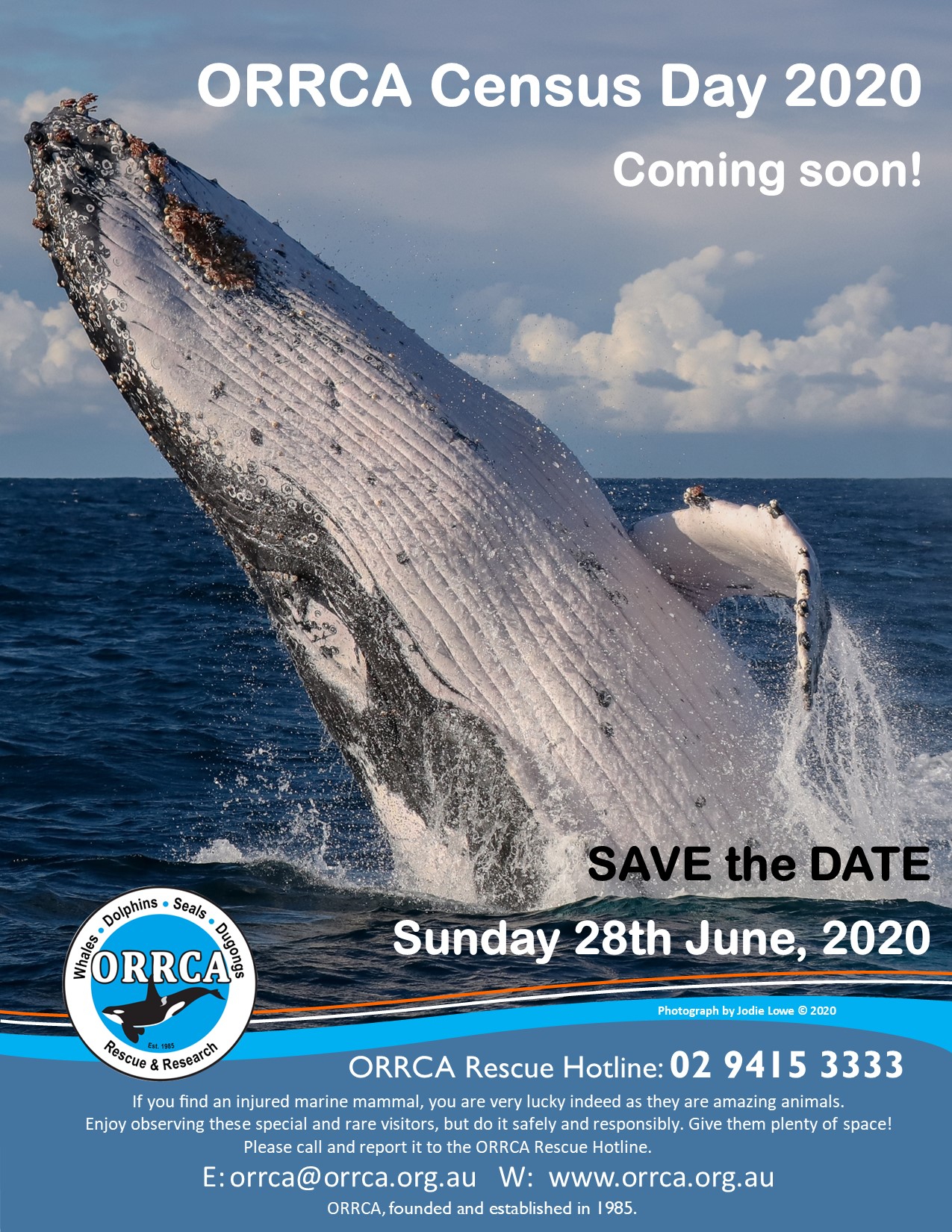
Rat Poisons Are Killing Our Wildlife: Alternatives
BirdLife Australia is currently running a campaign highlighting the devastation being caused by poison to our wildlife. Rodentcides are an acknowledged but under-researched source of threat to many Aussie birds. If you missed BirdLife's rodenticide talk but would like to know more, share data and comment on the use of rodenticides in Australia please visit: https://www.actforbirds.org/ratpoison
Owls, kites and other birds of prey are dying from eating rats and mice that have ingested Second Generation rodent poisons. These household products – including Talon, Fast Action RatSak and The Big Cheese Fast Action brand rat and mice bait – have been banned from general public sale in the US, Canada and EU, but are available from supermarkets throughout Australia.
Australia is reviewing the use of these dangerous chemicals right now and you can make a submission to help get them off supermarket shelves and make sure only licenced operators can use them.
There are alternatives for household rodent control – find out more about the impacts of rat poison on our birds of prey and what you can do at the link above and by reading the information below.
Let’s get rat poison out of bird food chains.
The Australian Pesticides and Veterinary Medicines Authority (APVMA) – is currently asking Australians for their views on how rodent poisons are regulated.
Have your say by making a submission here.
Powerful Owl at Clareville - photo by Paul Wheeler
Pesticides that are designed to control pests such as mice and rats cane also kill our wildlife through either primary or secondary poisoning. Insecticides include pesticides (substances used to kill insects), rodenticides (substances used to kill rodents, such as rat poison), molluscicides (substances used to kill molluscs, such as snail baits), and herbicides (substances used to kill weeds).
Primary poisoning occurs when an animal ingests a pesticide directly – for example, a brushtail possum or antechinus eating rat bait. Secondary poisoning occurs when an animal eats another animal that has itself ingested a pesticide – for example, a greater sooty owl eating a rate that has been poisoned or an antechinus that had eaten rat bait.
Rodenticides are the most common and harmful pesticides to Australian wildlife. Though no comprehensive monitoring of non-target exposure of rodenticides has been conducted, numerous studies have documented the harm rodenticides do to native animals. In 2018, an Australian study found that anticoagulant rodenticides in particular are implicated in non-target wildlife poisoning in Australia, and warned Australia’s usage patterns and lax regulations “may increase the risk of non-target poisoning”.
Most rodenticides work by disrupting the normal coagulation (blood clotting) process, and are classified as either “first generation” / “multiple dose” or “second generation” / “single dose”, depending on how many doses are required for the poison to be lethal.
These anticoagulant rodenticides cause victims of anticoagulant rodenticides to suffer greatly before dying, as they work by inhibiting Vitamin K in the body, therefore disrupting the normal coagulation process. This results in poisoned animals suffering from uncontrolled bleeding or haemorrhaging, either spontaneously or from cuts or scratches. In the case of internally haemorrhaging, which is difficult to spot, the only sign of poisoning is that the animal is weak, or (occasionally) bleeding from the nose or mouth. Affected wildlife are also more likely to crash into structures and vehicles, and be killed by predators.
An animal has to eat a first generation rodenticide (e.g. warfarin, pindone, chlorophaninone, diphacinone) more than once in order to obtain a lethal dose. For this reason, second generation rodenticides (e.g. difenacoum, brodifacoum, bromadiolone and difethialone) are the most commonly used rodenticides. Second generation rodenticides only require a single dose to be consumed in order to be lethal, yet kill the animal slowly, meaning the animal keeps coming back. This results in the animal consuming many times more poison than a single lethal dose over the multiple days it takes them to die, during which time they are easy but lethal prey to predators. This is why second generation poisons tend to be much more acutely toxic to non-target wildlife, as they are much more likely to bioaccumulate and biomagnify, and clear very slowly from the body.
Species most at risk from poisons
Small Mammals
Small mammals including possums and bandicoots often consume poisons such as snail bait, or rat bait that has been laid out to attract and kill rats, mice, and rabbits. Poisons such as pindone are often added to oats or carrots, and lead to a slow, painful death of internal bleeding. Australian possums often consume rat bait such as warfarin, which causes extensive internal bleeding, usually resulting in death.
There is a very poor chance of survival. Possums are also known to consume slug bait, which results in a prolonged painful death mainly from neurological effects. There is no treatment.
Small mammals can also be poisoned by insecticides. Possums, for example, can ingest these poisons when consuming fruit from a tree that has been sprayed with insecticide. Rescued by a WIRES carer, the brushtail possum joey pictured below was suffering from suspected insecticide poisoning. Though coughing up blood, luckily the joey did not ingest a lethal dose as he survived in care and was later released.
Large Mammals
Despite their size, large mammals including wallabies, kangaroos and wombats can also fall victim to pesticide poisoning. Wallabies and kangaroos have been known to suffer from rodenticide poisoning, while poisons often ingested by wombats include rat bait from farm sheds, and sodium fluroacetate (1080) laid out to kill pests such as cats and foxes.
Australian mammals are also impacted by the use of insecticides. DDT, although a banned substance, has been reported as killing marsupials.
Birds
Birds have a high metabolic rate and therefore succumb quickly to poisons. Australian birds of prey – owls (such as the southern boobook) and diurnal raptors (such as kestrels) – can be killed by internal bleeding when they eat rodents that have ingested rat bait. A 2018 Western Australian study determined that 73% of southern boobook owls found dead or were found to have anticoagulant rodenticides in their systems, and that raptors with larger home ranges and more mammal-based diets may be at a greater risk of anticoagulant rodenticide exposure.
Insectivorous birds will often eat insects sprayed with insecticides, and a few different species of birds may be affected at the same time. Unfortunately little can be done and death most often results.
Organophosphates are the most widely used insecticide in Australia. Birds are very susceptible to organophosphates, which are nerve toxins that damage the nervous system, with poisoning occurring through the skin, inhalation, and ingestion. Organophosphates can cause secondary poisoning in wild birds which ingest sprayed insects. Often various species of insectivorous birds are affected at the same time as they come down to eat the dying insects. After a bird is poisoned, death usually occurs rapidly. Raptors have also been deliberately or inadvertently poisoned when organophosphates have been applied to a carcass to poison crows.
Organochlorine pesticides (OCPs) are persistent, bio-accumulative pesticides that include DDT, dieldrin, heptachlor and chlordane. OPC’s have been used extensively in the agriculture industry since the 1940s. Some of the more common product names include Hortico Dieldrin Dust, Shell Dieldrex and Yates Garden Dust. Although no OCP’s are currently registered for use in the home environment in Australia, many of these products still remain in use on farms, in business premises and households. OCP poisons remain highly toxic in the environment for many years impacting on humans, animals, birds and especially aquatic life. They can have serious short-term and long-term impacts at low concentrations. In addition, non-lethal effects such as immune system and reproductive damage of some of these pesticides may also be significant. Birds are particularly sensitive to these pesticides, and there have even been occasions where the deliberate poisoning of birds has occurred. Tawny frogmouths are most often poisoned with OCP’s. The poisons are stored in fat deposits and gradually increase over time. At times of food scarcity, or during any stressful period, such as breeding season or any changes to their environment, the fat stores are metabolised, and with it, the poison load in their blood streams reaches acute levels, causing death.
Although herbicides, or weed killers, are designed to kill plants, some are toxic to birds. Common herbicide glyphosate (Roundup) will cause severe eye irritation in birds if they come into contact with the spray. Herbicides also have the impact of removing food plants that birds, or their insect food supply, rely on. Birds can also readily fall victim to snail baits, either via primary or secondary poisoning.
Reptiles and Amphibians
As vertebrate species, reptiles and amphibians are also at risk of pesticides. Though less is known about the effects of pesticides on reptiles and amphibians, these animals have been known to fall victim to pesticide poisoning. Blue-tongue lizards, for example, often consume rat bait and die of internal bleeding. A 2018 Australian study also found that reptiles may be important vectors (transporters) of rodenticides in Australia.
How to keep pests away and keep wildlife safe
Remember, pesticides are formulated to be tasty and alluring to the target species, but other species find them enticing, too. It is safest for wildlife, pets and people for us to not use any pesticides, and prevent or deter the presence of pests practically, rather than attempt to eliminate them chemically.
Tips to prevent and deter wildlife deaths from poisoning:
- Deter rats and mice around your property by simply cleaning up; removing rubbish, keeping animal feed well contained and indoors, picking up fallen fruits and vegetation, and using chicken feeders removes potential food sources.
- Seal up holes and in your walls and roof to reduce the amount of rodent-friendly habitat in your house.
- Replace palms with native trees; palm trees are a favourite hideout for black rats, while native trees provide ideal habitat for native predators like owls and hawks which help to control rodent populations.
- Set traps with care in a safe, covered spot, away from the reach of children, pets and wildlife. Two of the most effective yet safe baits are peanut butter and pumpkin seeds.
- To control slugs, terracotta or ceramic plant pots can be placed upside down in the garden or aviary. Slugs and snails will seek the dark, damp area this creates, and can be collected daily. They can then be drowned in a jar of soapy water. You can also sink a jar or dish into the soil and fill it with beer. The slugs are attracted to the yeast in the beer, fall in and then drown.
If turning to pesticides as a last resort:
- Use only animal-safe slug baits.
- Place tamper-proof bait stations out of reach of wildlife.
- Avoid using loose whether pellets or poison grain, present the highest risk, the latter being particularly attractive to seed-eating birds and to many small mammal species.
- Read the label and use as instructed.
- Avoid products containing second generation products difenacoum, brodifacoum, bromadiolone and difethialone, which are long-lasting and much more likely to unintentionally poison wildlife via secondary poisoning.
- Cover individual fruits when spraying fruit trees with insecticides.
Poisons kill dogs too
Because of their poisonous nature, pesticides pose a risk to animals and people alike, including pets and children. Roaming pets like cats and dogs are most at risk of being poisoned, with one 2016 study at the Norwegian University of Life Sciences finding that one in five dogs had rat poison in its body, and a 2011 study by the Humane Society in the United States finding that 74% of their pet poisoning cases are due to second-generation anticoagulants such as rat baits.
It is best to avoid the use of all pesticides, or otherwise use them sparingly, carefully and only after researching each poison and its correct usage. Always supervise pets and children, keep poisons locked out of their reach, and be vigilant in public spaces where pesticides may have accumulated, e.g. poisons can accumulate in streams or puddles where herbicides have recently been sprayed.
If you suspect your pet has been poisoned, seek veterinary help immediately.
If you suspect your child or another adult has been poisoned, do not induce vomiting and call the NSW Poisons Information Centre on 13 11 26 for 24/7 medical advice, Australia-wide.
References
Lohr, M. T. & Davis, R. A. 2018, Anticoagulant rodenticide use, non-target impacts and regulation: A case study from Australia, Science of The Total Environment, vol. 634, pp. 1372-1384.
Lohr, M. T. 2018, Anticoagulant rodenticide exposure in an Australian predatory bird increases with proximity to developed habitat, Science of The Total Environment, Volume 643, pp.134-144.
Lohr, M. T. 2018, Anticoagulant Rodenticides: Implications for Wildlife Rehabilitation, conference paper, Australian Wildlife Rehabiliation Conference, awrc.org.au
Olerud, S., Pedersen, J. & Kull, E. P. 2009, Prevalence of superwarfarins in dogs – a survey of background levels in liver samples of autopsied dogs. Norwegian University of Life Sciences, Faculty of Veterinary Medicine and Life Sciences, Department of Sports and Family Animal Medicine, Section for Small Animal Diseases.
Healthy Wildlife, Healthy Lives, 2017, Rodenticides and Wildlife, healthywildlife.com.au
Society for the Preservation of Raptors Inc. 2019, Raptor Fact Sheet: Eliminate Rats and Mice, Not Wildlife!, raptor.org.au/factsheetpests.pdf
W.I.R.E.S. Poisons and baits don't just kill rats.
.jpg?timestamp=1590728675788)
Barking Owl (Ninox connivens connivens)- photo by Julie Edgley - this nocturnal animal will eat mice and so become a victim of poisons through them
Echidna Season
Echidna season has begun. As cooler days approach, our beautiful echidnas are more active during the days as they come out to forage for food and find a mate. This sadly results in a HIGH number of vehicle hits.
What to do if you find an Echidna on the road?
- Safely remove the Echidna off the road (providing its safe to do so).
- Call Sydney Wildlife or WIRES
- Search the surrounding area for a puggle (baby echidna). The impact from a vehicle incident can cause a puggle to roll long distances from mum, so please search for these babies, they can look like a pinky-grey clump of clay
What to do if you find an echidna in your yard?
- Leave the Echidna alone, remove the threat (usually a family pet) and let the Echidna move away in it's own time. It will move along when it doesn't feel threatened.
If you find an injured echidna or one in an undesirable location, please call Sydney Wildlife on 9413 4300 for advice.
www.sydneywildlife.org.au
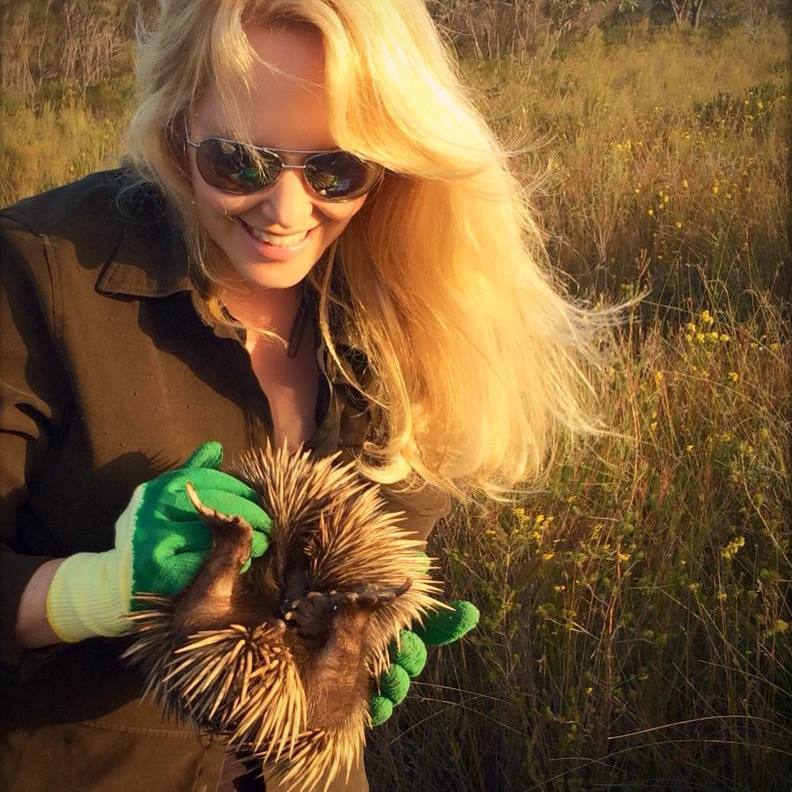
Lynleigh Greig, Sydney Wildlife, with a rescued echidna being returned to its home
Tiger Snakes Tell More About Local Wetlands’ Pollution Levels
June 2, 2020
Tiger snakes living in Perth's urban wetlands are accumulating toxic heavy metals in their livers, suggesting that their habitats -- critical, local ecosystems -- are contaminated and the species may be suffering as a result.
Lead researcher PhD Candidate Mr Damian Lettoof, from the Behavioural Ecology Lab in the School of Molecular and Life Sciences at Curtin University, said that not only were the snakes' livers shown to contain moderately high levels of heavy metals, but sediment samples taken from some of the wetlands sites were found to have amounts of arsenic, lead, mercury and selenium that exceed current government guidelines.
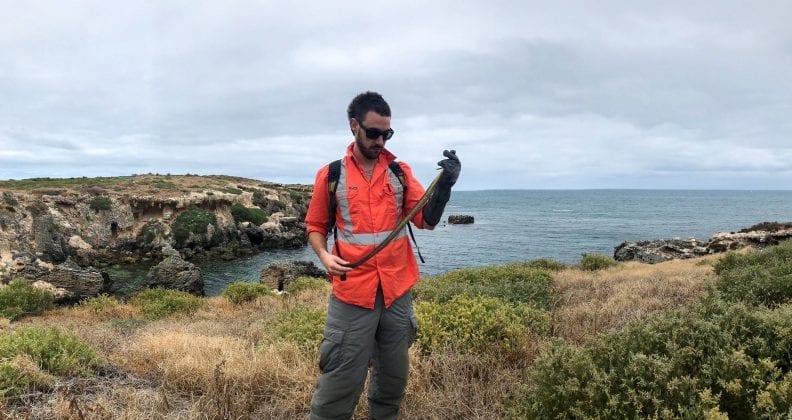
Lead researcher PhD Candidate Mr Damian Lettoof holding a tiger snake.
"Urban wetlands are almost always polluted, commonly from contaminated storm water, past or present dumping of waste, and spill events," Mr Lettoof said.
"Wetlands areas are usually situated at low points in the landscape, so unfortunately, a lot of urban run-off ends up in them. Generally speaking, the longer the wetland has been urbanised, the higher the levels of pollution.
"It's important to note that many heavy metals exist naturally in the wetlands sediment and surrounding rocks, in low concentrations, which may cause some heavy metals to leach in to the wetlands environment.
"However, the high concentrations of heavy metals we found in the snakes' livers and sediment samples suggest urbanisation and human-induced pollution are the cause, and consequently could be affecting local snake populations," Mr Lettoof said.
The study found the metal concentrations in the snake livers were collectively highest in Perth's most urbanised wetland: Herdsman Lake in the north western suburbs.
"Snakes tested from Herdsman Lake also had the highest concentration of the metal molybdenum ever reported in a terrestrial reptile, in the world," Mr Lettoof said.
"Continuous, chronic exposure to contaminants can have a range of impacts on the health and behaviour of animals. The contaminated populations could be suffering poorer health conditions, leading to shorter lifespans, higher predation, and ultimately, local extinction with cascading consequences such as reduced local biodiversity."
Collectively, Lake Joondalup had the lowest levels of metals. The researchers also analysed samples from Bibra Lake and Loch McNess in Yanchep National Park.
Tiger snakes are a top predator in the wetlands environment, and most likely have bioaccumulated the heavy metals through eating frogs, which are very sensitive to accumulating contaminants.
The Curtin University study was the first of its kind in Australia to show that snakes are a good bio-indicator of wetland contamination, and highlights the use of monitoring snake populations as an important indicator species of environmental health.
D. C. Lettoof, P. W. Bateman, F. Aubret, M. M. Gagnon. The Broad-Scale Analysis of Metals, Trace Elements, Organochlorine Pesticides and Polycyclic Aromatic Hydrocarbons in Wetlands Along an Urban Gradient, and the Use of a High Trophic Snake as a Bioindicator. Archives of Environmental Contamination and Toxicology, 2020; 78 (4): 631 DOI: 10.1007/s00244-020-00724-z
Sea Snakes Have Been Adapting To See Underwater For 15 Million Years
May 28, 2020
Sea snakes first entered the marine environment 15 million years ago and have been evolving ever since to survive in its changing light conditions, according to a new study.
Research led by the University of Plymouth (UK) has for the first time provided evidence of where, when and how frequently species have adapted their ability to see in colour.
It suggests sea snakes' vision has been modifying genetically over millions of generations, enabling them to adapt to new environments and meaning they can continue to see prey -- and predators -- deep below the sea surface.
In an unexpected twist, the study published in Current Biology also suggests that diving sea snakes actually share their adaptive properties not with other snakes or marine mammals, but with some fruit-eating primates.
The research was led by Dr Bruno Simões, Lecturer in Animal Biology at the University of Plymouth, and involved scientists from the UK, Australia, Denmark, Bangladesh and Canada.
Dr Simões, formerly a Marie Sk?odowska-Curie Global Fellow at the University of Bristol (UK) and University of Adelaide (Australia), said: "In the natural world, species obviously have to adapt as the environment around them changes. But to see such a rapid change in the sea snakes' vision over less than 15 million years is truly astonishing. The pace of diversification among sea snakes, compared to their terrestrial and amphibious relatives, is perhaps a demonstration of the immensely challenging environment they live in and the need for them to continue to adapt in order to survive.
"Our study also shows that snake and mammal vision has evolved very differently in the transition from land to sea. Sea snakes have retained or expanded their colour vision compared to their terrestrial relatives, whereas pinnipeds and cetaceans underwent a further reduction in the dimensions of their colour vision. This contrast is further evidence of the remarkable evolutionary diversity of snake eyesight."
In the study, scientists say that despite being descended from highly visual lizards, snakes have limited (often two-tone) colour vision, attributed to the dim-light lifestyle of their early snake ancestors.
However, the living species of front-fanged and venomous elapids are ecologically very diverse, with around 300 terrestrial species (such as cobras, coral snakes and taipans) and 63 fully marine sea snakes.
To try and establish how this diversity occurred, scientists analysed various species of terrestrial and sea snakes from sources including fieldwork in Asia and Australia and historical museum collections.
They investigated the evolution of spectral sensitivity in elapids by analysing their opsin genes (which produce visual pigments that are responsible for sensitivity to ultra-violet and visible light), retinal photoreceptors and eye lenses.
Their results showed that sea snakes had undergone rapid adaptive diversification of their visual pigments when compared with their terrestrial and amphibious relatives.
In one specific example, a particular lineage of sea snake had expanded its UV-Blue sensitivity. Sea snakes forage on the sea floor in depths exceeding 80 metres, yet must swim to the surface to breathe at least once every few hours. This expanded UV-Blue sensitivity helps the snakes to see in the variable light conditions of the ocean water column.
Also, most vertebrates have pairs of chromosomes resulting in two copies of the same genes. In some fruit-eating primates, the two copies might be slightly different (alleles) resulting in visual pigments with different spectral properties, expanding their colour vision. This study suggests that some sea snakes used the same mechanism to expand their underwater vision with both UV sensitive and blue-sensitive alleles.
Dr Kate Sanders, Associate Professor of the University of Adelaide and senior author, said: "Different alleles of the same gene can be used by organisms to adapt new environmental conditions. The ABO blood types in primates are a result of different alleles of the same gene. However, despite being very important for the adaptation of species this mechanism is still poorly reported. For vision, it has been only reported on the long-wavelength opsin of some primates but our study suggests an intriguing parallel with diving sea snakes."
Bruno F. Simões, David J. Gower, Arne R. Rasmussen, Mohammad A.R. Sarker, Gary C. Fry, Nicholas R. Casewell, Robert A. Harrison, Nathan S. Hart, Julian C. Partridge, David M. Hunt, Belinda S. Chang, Davide Pisani, Kate L. Sanders. Spectral Diversification and Trans-Species Allelic Polymorphism during the Land-to-Sea Transition in Snakes. Current Biology, 2020; DOI: 10.1016/j.cub.2020.04.061
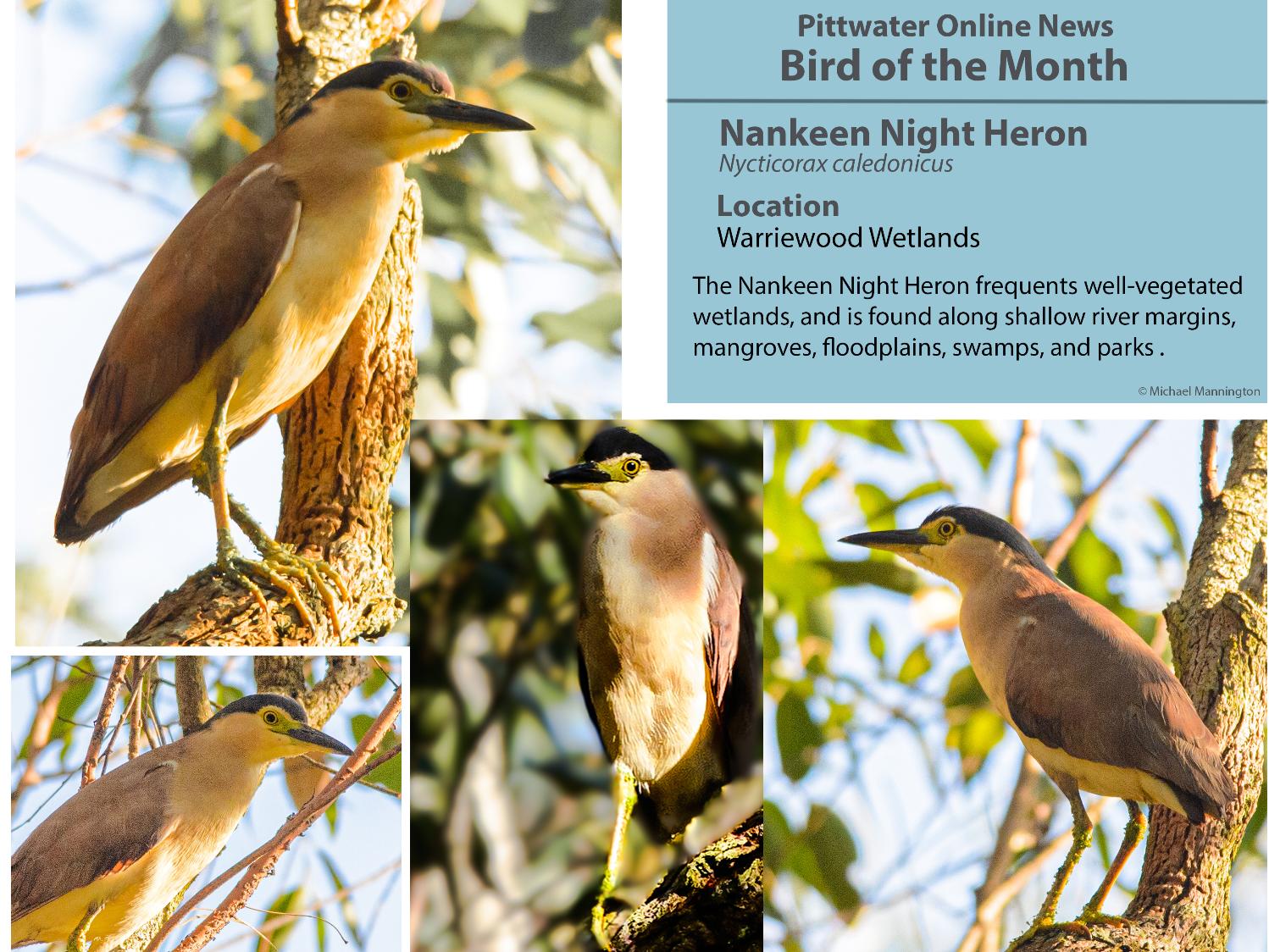
 New Shorebird Identification Booklet
New Shorebird Identification Booklet
The Migratory Shorebird Program has just released the third edition of its hugely popular Shorebird Identification Booklet. The team has thoroughly revised and updated this pocket-sized companion for all shorebird counters and interested birders, with lots of useful information on our most common shorebirds, key identification features, sighting distribution maps and short articles on some of BirdLife’s shorebird activities.
The booklet can be downloaded here in PDF file format: http://www.birdlife.org.au/documents/Shorebird_ID_Booklet_V3.pdf
Paper copies can be ordered as well, see http://www.birdlife.org.au/projects/shorebirds-2020/counter-resources for details.
Download BirdLife Australia's children’s education kit to help them learn more about our wading birdlife
Shorebirds are a group of wading birds that can be found feeding on swamps, tidal mudflats, estuaries, beaches and open country. For many people, shorebirds are just those brown birds feeding a long way out on the mud but they are actually a remarkably diverse collection of birds including stilts, sandpipers, snipe, curlews, godwits, plovers and oystercatchers. Each species is superbly adapted to suit its preferred habitat. The Red-necked Stint is as small as a sparrow, with relatively short legs and bill that it pecks food from the surface of the mud with, whereas the Eastern Curlew is over two feet long with a exceptionally long legs and a massively curved beak that it thrusts deep down into the mud to pull out crabs, worms and other creatures hidden below the surface.
Some shorebirds are fairly drab in plumage, especially when they are visiting Australia in their non-breeding season, but when they migrate to their Arctic nesting grounds, they develop a vibrant flush of bright colours to attract a mate. We have 37 types of shorebirds that annually migrate to Australia on some of the most lengthy and arduous journeys in the animal kingdom, but there are also 18 shorebirds that call Australia home all year round.
What all our shorebirds have in common—be they large or small, seasoned traveller or homebody, brightly coloured or in muted tones—is that each species needs adequate safe areas where they can successfully feed and breed.
The National Shorebird Monitoring Program is managed and supported by BirdLife Australia.
This project is supported by Glenelg Hopkins Catchment Management Authority and Hunter Local Land Services through funding from the Australian Government’s National Landcare Program. Funding from Helen Macpherson Smith Trust and Port Phillip Bay Fund is acknowledged.
The National Shorebird Monitoring Program is made possible with the help of over 1,600 volunteers working in coastal and inland habitats all over Australia.
The National Shorebird Monitoring program (started as the Shorebirds 2020 project initiated to re-invigorate monitoring around Australia) is raising awareness of how incredible shorebirds are, and actively engaging the community to participate in gathering information needed to conserve shorebirds.
In the short term, the destruction of tidal ecosystems will need to be stopped, and our program is designed to strengthen the case for protecting these important habitats.
In the long term, there will be a need to mitigate against the likely effects of climate change on a species that travels across the entire range of latitudes where impacts are likely.
The identification and protection of critical areas for shorebirds will need to continue in order to guard against the potential threats associated with habitats in close proximity to nearly half the human population.
Here in Australia, the place where these birds grow up and spend most of their lives, continued monitoring is necessary to inform the best management practice to maintain shorebird populations.
BirdLife Australia believe that we can help secure a brighter future for these remarkable birds by educating stakeholders, gathering information on how and why shorebird populations are changing, and working to grow the community of people who care about shorebirds.
To find out more visit: http://www.birdlife.org.au/projects/shorebirds-2020/shorebirds-2020-program
Bushcare In Pittwater
Where we work Which day What time
Avalon
Angophora Reserve 3rd Sunday 8:30 - 11:30am
Avalon Dunes 1st Sunday 8:30 - 11:30am
Avalon Golf Course 2nd Wednesday 3 - 5:30pm
Careel Creek 4th Saturday 8:30 - 11:30am
Toongari Reserve 3rd Saturday 9 - 12noon (8 - 11am in summer)
Bangalley Headland 2nd Sunday 9 to 12noon
Bayview
Winnererremy Bay 4th Sunday 9 to 12noon
Bilgola
North Bilgola Beach 3rd Monday 9 - 12noon
Algona Reserve 1st Saturday 9 - 12noon
Plateau Park 1st Friday 8:30 - 11:30am
Church Point
Browns Bay Reserve 1st Tuesday 9 - 12noon
McCarrs Creek Reserve Contact Bushcare Officer To be confirmed
Clareville
Old Wharf Reserve 3rd Saturday 8 - 11am
Elanora
Kundibah Reserve 4th Sunday 8:30 - 11:30am
 Mona Vale
Mona Vale Mona Vale Beach Basin 1st Saturday 8 - 11am
Mona Vale Dunes 2nd Saturday +3rd Thursday 8:30 - 11:30am
Newport
Bungan Beach 4th Sunday 9 - 12noon
Crescent Reserve 3rd Sunday 9 - 12noon
North Newport Beach 4th Saturday 8:30 - 11:30am
Porter Reserve 2nd Saturday 8 - 11am
North Narrabeen
Irrawong Reserve 2nd Saturday 2 - 5pm
Palm Beach
North Palm Beach Dunes 3rd Saturday 9 - 12noon
Scotland Island
Catherine Park 2nd Sunday 10 - 12:30pm
Elizabeth Park 1st Saturday 9 - 12noon
Pathilda Reserve 3rd Saturday 9 - 12noon
Warriewood
Warriewood Wetlands 1st Sunday 8:30 - 11:30am
Whale Beach
Norma Park 1st Friday 9 - 12noon
Western Foreshores
Coopers Point, Elvina Bay 2nd Sunday 10 - 1pm
Rocky Point, Elvina Bay 1st Monday 9 - 12noon
Gardens And Environment Groups And Organisations In Pittwater
Pittwater Reserves
Aussie Bread Tags Collection Points

NSWRL Return To Play Update


Manly Warringah Netball Association Presidents' Update
 June 4, 2020
June 4, 2020- Training can take place in groups of 10, as per the guidelines released two weeks ago.
- Training is NOT restricted to children. Players of all ages can train.
- Competitions for players aged 18 and under can commence on July 1st.
- There is no timeline for adult sport to restart in NSW as of today.
Who's This Girl? Why Is She On The Front Page This Week?
Check out this Issues' Aquatics Feature to find out!
Englishman In New York: Be Yourself No Matter What They Say
"Englishman in New York" is a song by English artist Sting, from his second studio album ...Nothing Like the Sun, released in October 1987. Branford Marsalis played soprano saxophone on the track, while the drums were played by Manu Katché and the percussion by Mino Cinelu.
The "Englishman" in question is the famous eccentric and gay icon Quentin Crisp. Sting wrote the song not long after Crisp moved from London to an apartment in the Bowery in Manhattan. Crisp had remarked jokingly to the musician "that he looked forward to receiving his naturalisation papers so that he could commit a crime and not be deported."
The video was shot in black-and-white and was directed by David Fincher, and featured scenes of Sting and his band in New York, as well as the elusive Quentin Crisp. At the end of the video, after the song fades, an elderly male voice says: "If I have an ambition other than a desire to be a chronic invalid, it would be to meet everybody in the world before I die... and I'm not doing badly." In 2011, the official video was replaced with a version without the male voice.
A favourite lyric for many of us 'oldies' from the song is ''Be Yourself No Matter What They Say'' which forms part of the ending chorus.
Yoga Keeps Seniors Forever Young
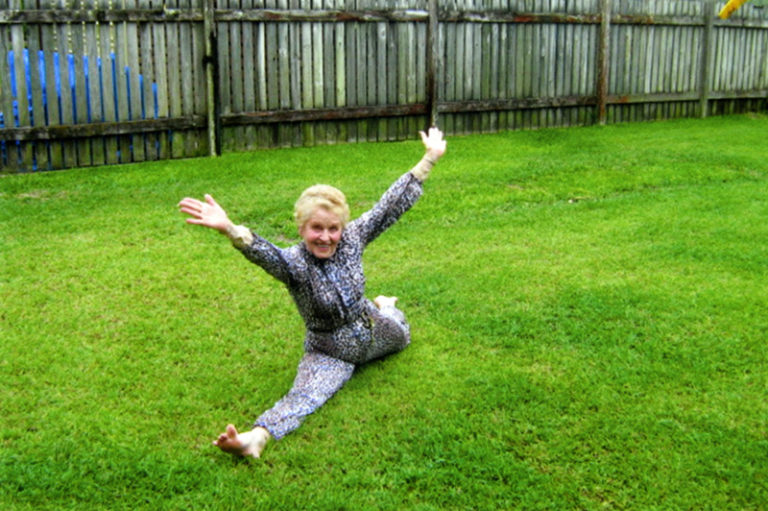
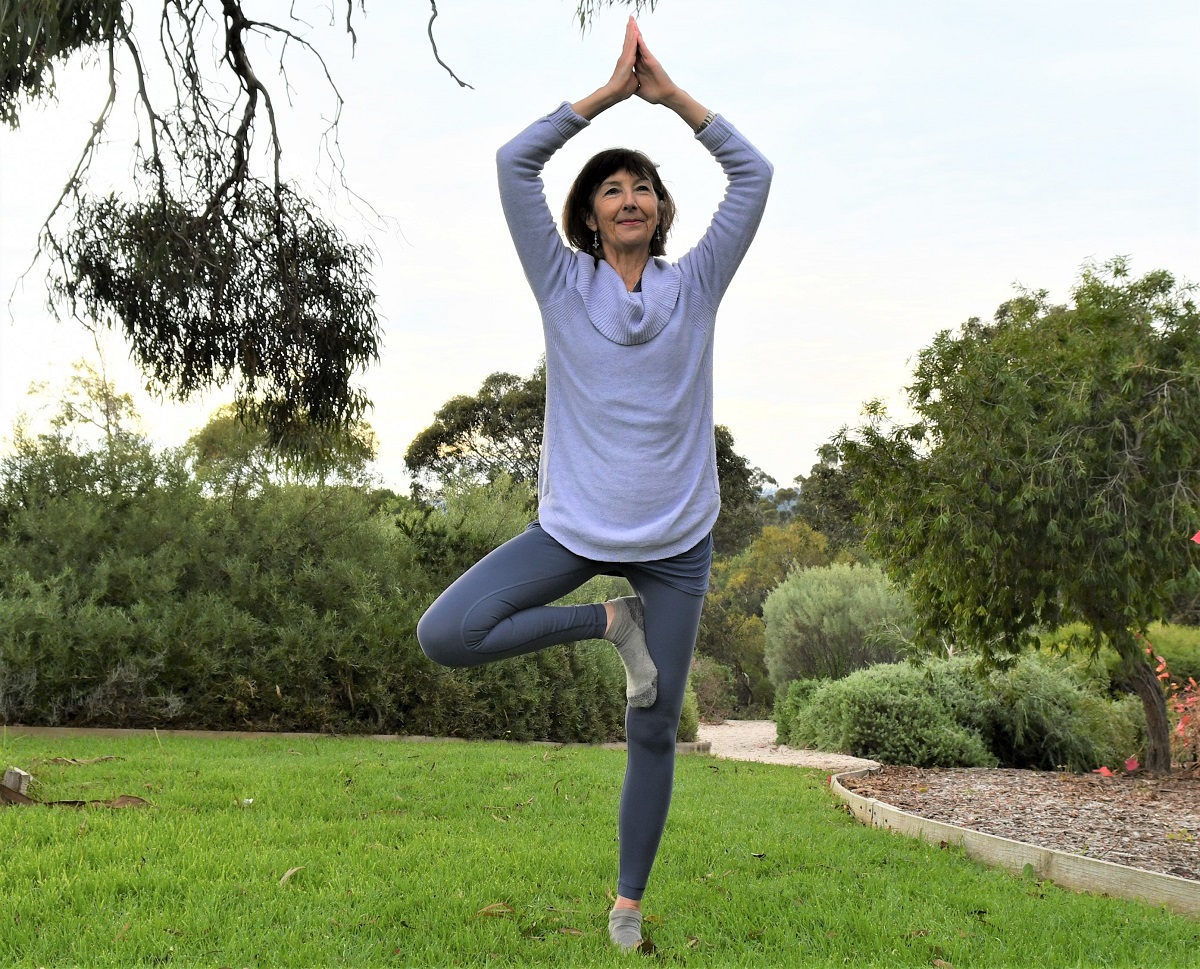
Henry Parkes had a vision of a new Australian nation. In 1901, it became a reality
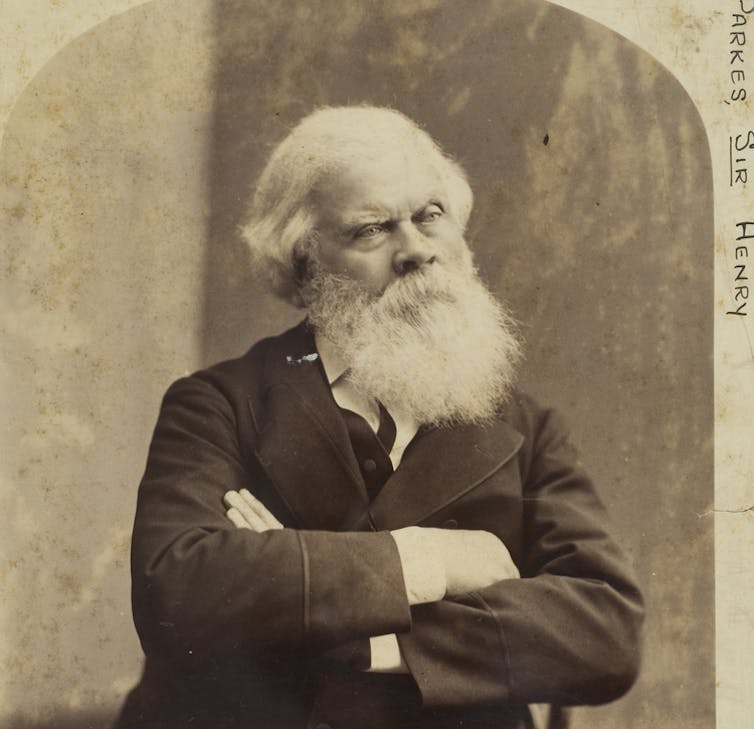
The Conversation is running a series of explainers on key figures in Australian political history, looking at the way they changed the nature of debate, its impact then, and it relevance to politics today. You can read our piece on Julia Gillard here.
Henry Parkes, known today as the “Father of Federation”, set in motion the process that led to the joining of Australia’s six colonies in 1901 – a significant moment that heralded the birth of a new nation.
While he did not live to see the outcome – he died five years before the establishment of the Commonwealth of Australia – Parkes had been the driving force behind the idea of federation and a key architect of the process that ultimately created it.
Parkes’s vision was to unite the British colonies into a self-governing and democratic nation that spanned the continent. The new country would have a constitution written by Australians, but would remain “under the British crown” in an enduring relationship with the land of his birth.
Read more: How Julia Gillard forever changed Australian politics - especially for women
Perhaps the most defining moment of his political career came in 1889, when he gave his Tenterfield Oration. Much like US President Abraham Lincoln’s Gettysburg Address in 1863, Parkes’ speech was little reported at the time, but later took on legendary status.
The great question which we have to consider is, whether the time has not now arisen for the creation on this Australian continent of an Australian government and an Australian parliament … Surely what the Americans have done by war, Australians can bring about in peace.
From Radical Ideas To A Career In Politics
Parkes was born in Warwickshire, England, in 1815 into a family of poor tenant farmers. After his family was forced off the farm by debt in 1823, he later worked in Birmingham and London.
In 1838, Parkes moved to New South Wales as a bounty migrant with his young wife and developed considerable talent as a journalist. This was all the more remarkable given he was largely self-educated.
He eventually gravitated to politics and associated himself with the radical patriots in the colony. With these radicals, Parkes pushed for universal suffrage, the transformation of the Australian colonies into a federal republic and, above all, for free trade. He also campaigned against the transportation of convicts from the UK.
Read more: Australian politics explainer: how women gained the right to vote
Parkes later moved away from radicalism and republicanism, deciding he could achieve more in government. When New South Wales achieved control over its local affairs in the 1850s, Parkes joined the legislative assembly as one of a small group of liberals.
Parkes devoted his career to politics, moving through the ranks of the pro-free trade liberals to serve five terms as premier of New South Wales from 1872-91.

Parkes Advocates For A Federal Council
After the separation of Queensland from New South Wales in 1859, there were five self-governing colonies in eastern Australia. The colonies were competitive and largely concerned with their own affairs. Federation was not a pressing issue.
Parkes was still relatively new to politics in the 1860s, but he nonetheless became a tireless crusader for his idea of a colonial union. As NSW colonial secretary, he proposed establishing a federal council of representatives from all five colonies in 1867, and again as premier in 1880. Both times, it went nowhere.
Read more: Australian politics explainer: the writing of our Constitution
However, a few years later, the colonies finally began to see the benefits of a stronger federation, due to unease over the expanding influence of the French and Germans in the Pacific. All except NSW ultimately supported the establishment of the federal council in 1885.
The new council had limited legislative powers and no permanent executive powers or revenues of its own. The absence of NSW also weakened it.
Nonetheless, it was the first major form of inter-colonial cooperation. The council also allowed federalists to meet and exchange ideas, setting in motion the more ambitious campaign for federation led by Parkes.

The Tenterfield Address And Dawn Of Federation
By the end of the 1880s, opinion was divided over the future of the Australian colonies. While some advocated to “cut the painter” and separate from Britain, others preferred to protect the current system.
The concept of an “imperial federation” with a single federal state consisting of the UK at the centre and the self-governing colonies was also gaining popularity.
One of the primary obstacles to federation was the struggle between New South Wales, which supported free trade, and other colonies like Victoria, which advocated protectionism. Parkes was able to neutralise this problem by proposing that once a federation was created, a Commonwealth parliament could legislate on tariff policy.
Read more: Australian politics explainer: the writing of our Constitution
In 1889, Parkes grasped the nettle. He proposed to the Victorian government that the colonies should appoint delegates to a convention, which would draw up the constitution for a nation and discuss its relationship with Britain.
Later that year, Parkes travelled to Queensland armed with a report on colonial defence to garner Queensland’s support for his cause. On his return journey, he delivered his famous address at Tenterfield calling for “a great national government for all Australia”.
In 1890, Parkes finally succeeded in putting together an informal colonial conference in Melbourne that led to the first National Australasian Convention in Sydney the following year. It was a revolutionary moment for the future country and produced the fundamentals of the federal system we have today.
Led by Parkes, the delegates in Melbourne and Sydney sketched out a House of Representatives, representing the people, and a Senate representing the colonies (later states). They also specified powers for the Commonwealth and the states, and envisioned a High Court to interpret the constitution.
Both conventions were a triumph for Parkes. Alfred Deakin, a young Victorian legislator at the time, noted he was
from first to last, the chief and leader.
More conventions were held over the coming years to iron out the details of a bill that was finalised in 1899 and transmitted to the UK for ratification by the British parliament.
Parkes’s Legacy Today
Parkes’s championing of the federal movement transformed Australia’s political agenda at a time when the colonies were still content to chart separate courses.
After his death, referendums were held in all the colonies in 1899 and 1900 and the people voted “yes”. Australia finally became a federation on January 1 1901.

In the federation procession in Melbourne in 1901, Parkes was the only leader who received public homage, with his image and slogans festooned on signs and other paraphernalia. Other politicians, including the country’s first prime minister, Edmund Barton, yielded him the preeminent position in the pantheon of federation fathers.
After 120 years, Australians take federation as a given. But had it not been for Parkes, Australia would probably not have become a nation in 1901, and the system of government we have today might well be very different.![]()
David Lee, Associate Professor of History , UNSW
This article is republished from The Conversation under a Creative Commons license. Read the original article.
Tour From Space: Inside The SpaceX Crew Dragon Spacecraft On Its Way To The Space Station
What are the characteristics of strong mental health?

Amid the coronavirus pandemic we are being warned of a “second wave” of mental health problems that threatens to overrun an already weakened mental health service.
As we emerge from this crisis, while some people may need specialist help with treating mental illness, everybody can benefit from strategies to improve mental health.
This is because mental health is more than just the absence of mental illness. Positive mental health is a combination of feeling good and functioning well.
Read more: Is your mental health deteriorating during the coronavirus pandemic? Here's what to look out for
Mental Illness Vs Mental Health: What’s The Difference?
Mental health and mental illness are not simply two sides of the same coin. Mental health, just like physical health, exists on a spectrum from poor to optimal.
With physical health, some days we naturally feel stronger and more energetic than others. Similarly, some days our mental health is worse than others, and that too is a natural part of being human. We may feel tired, grumpy, sad, angry, anxious, depressed, stressed, or even happy at any point in time. These are all normal human emotions, and aren’t on their own a sign of mental illness.
Someone living with a mental illness can be experiencing optimal mental health at any point in time, while someone else can feel sad or low even in the absence of a mental illness.
Differentiating between poor mental health and symptoms of a mental illness is not always clear-cut. When poor mental health has a sustained negative impact on someone’s ability to work, have meaningful relationships, and fulfil day-to-day tasks, it could be a sign of mental illness requiring treatment.

What Does Positive Mental Health Look Like?
Mental health is more than just the absence of mental illness.
Positive mental health and well-being is a combination of feeling good and functioning well. Important components include:
experiencing positive emotions: happiness, joy, pride, satisfaction, and love
having positive relationships: people you care for, and who care for you
feeling engaged with life
meaning and purpose: feeling your life is valuable and worthwhile
a sense of accomplishment: doing things that give you a sense of achievement or competence
emotional stability: feeling calm and able to manage emotions
resilience: the ability to cope with the stresses of daily life
optimism: feeling positive about your life and future
self-esteem: feeling positive about yourself
vitality: feeling energetic.
How Can I Cultivate My Mental Health?
Your mental health is shaped by social, economic, genetic and environmental conditions. To improve mental health within society at large, we need to address the social determinants of poor mental health, including poverty, economic insecurity, unemployment, low education, social disadvantage, homelessness and social isolation.

On an individual level, there are steps you can take to optimise your mental health. The first step is identifying your existing support networks and the coping strategies that you’ve used in the past.
There are also small things you can do to improve your mental health and help you to cope in tough times, such as:
helping others
finding a type of exercise or physical activity you enjoy (like yoga)
connecting with others, building and maintaining positive relationships
learning strategies to manage stress
having realistic expectations (no one is happy and positive all the time)
learning ways to relax (such as meditation)
counteracting negative or overcritical thinking
doing things you enjoy and that give you a sense of accomplishment.
How Do I Know If I Need Extra Support?
Regardless of whether you are experiencing a mental illness, everyone has the right to optimal mental health. The suggestions above can help everyone improve their mental health and well-being, and help is available if you’re not sure how to get started.
However, when distress or poor mental health is interfering with our daily life, work, study or relationships, these suggestions may not be enough by themselves and additional, individualised treatment may be needed.
If the answer to RUOK? is no, or you or your loved ones need help, reaching out to your local GP is an important step. If you are eligible, your GP can refer you for free or low-cost sessions with a psychologist, exercise physiologist, dietitian, or other allied health or medical support services.
This article is supported by the Judith Neilson Institute for Journalism and Ideas.![]()
Simon Rosenbaum, Associate professor & Scientia Fellow, UNSW and Jill Newby, Associate Professor and MRFF Career Development Fellow, UNSW
This article is republished from The Conversation under a Creative Commons license. Read the original article.
Stay Healthy During The HSC
In any ‘normal’ year the HSC requires dedication and focus as well as the support of friends and family.
This year hasn’t exactly panned out to be a ‘normal’ year, with announcements about changes to the HSC due to COVID-19.
Despite all the goings-on, students across NSW are continuing to study for their HSC with focus and determination, and we at NESA are here to help.
This year we are partnering with mental health organisation ReachOut to deliver news, information, guidance and advice to support all HSC students.
You’ll hear from experts, teachers, parents and other students as well as some inspiring spokespeople. This year we are planning to lighten your mental load with practical tips and tricks for staying active, connected and in charge of your wellbeing.
ReachOut’s Study Hub has heaps of info about taking a proactive approach to your mental health or where to go if you need more support. ReachOut’s Forums are great for sharing what’s going on for you and get ideas about the best ways to feel happy and well.
So follow and use #StayHealthyHSC for regular health and wellbeing updates and information.
View our range of social media images, posters and flyer to help you get involved and share the Stay Healthy HSC message with your community.

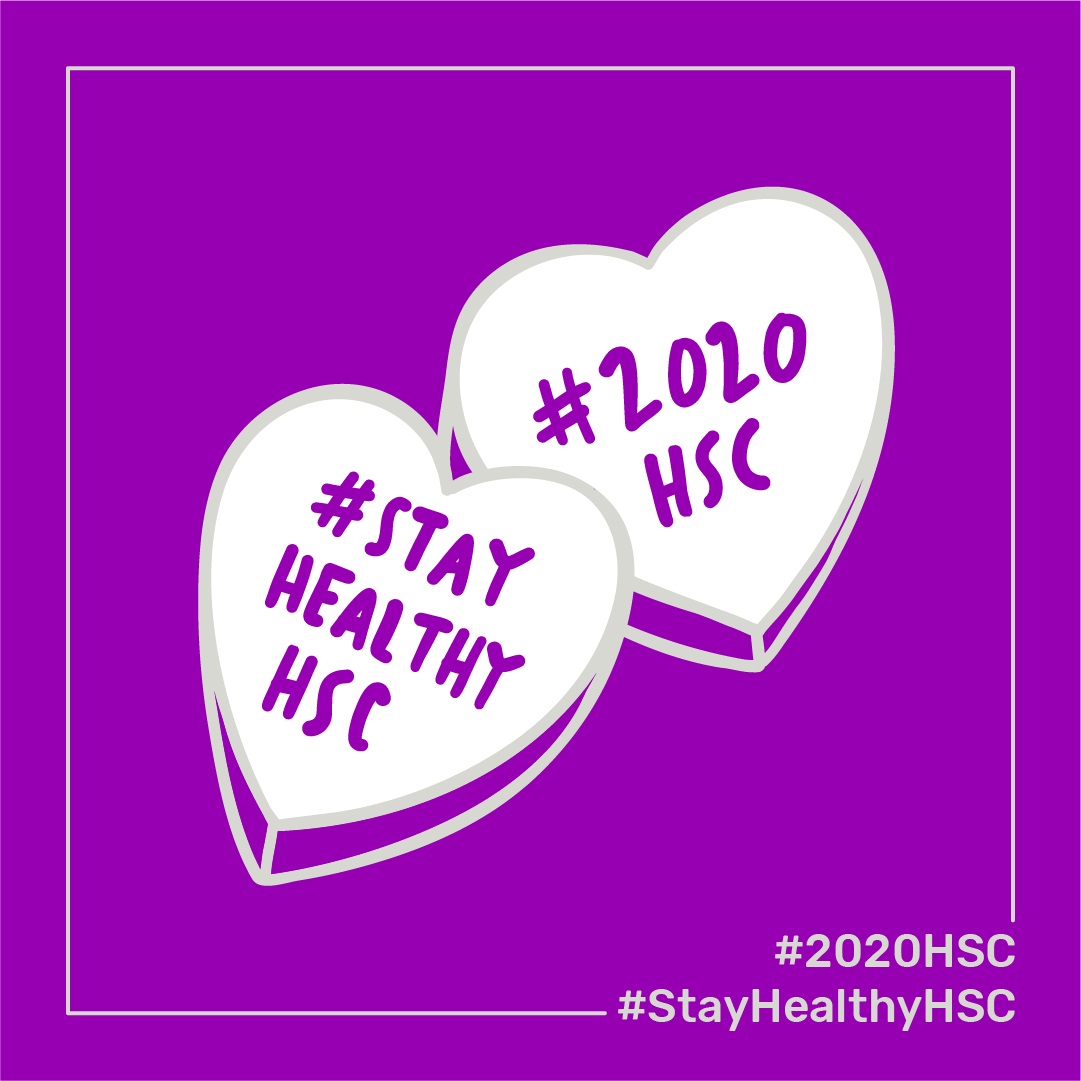
BirdLife Australia 2020 Photo Comp
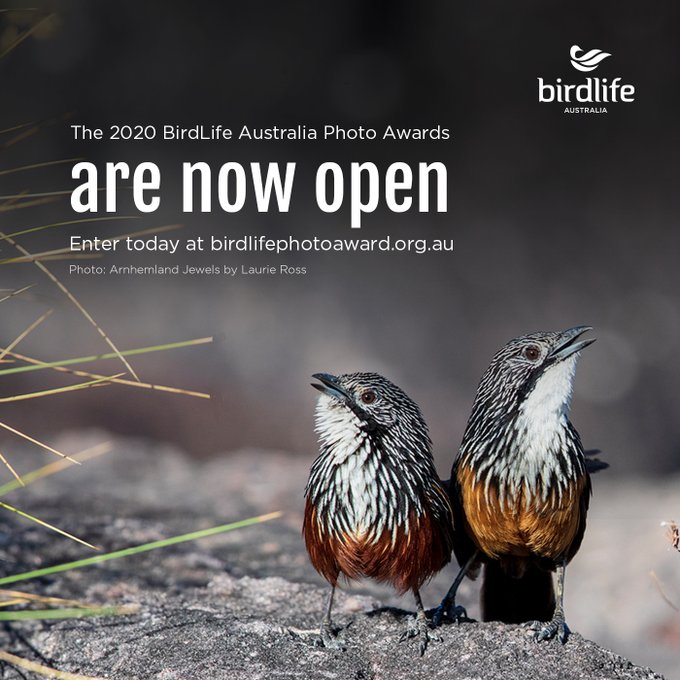
Young Writers' Competition 2020
Splash through puddles, hear a suspicious splash or have your face splashed across the news... How will you make a splash?
The Northern Beaches Young Writers' Competition 2020 is now open!
Write an original story using this year's theme word 'splash' for a chance to be published as an author in a library eBook.
The competition is open to students up to and including year 12 who live or go to school on the Northern Beaches and are members of the Northern Beaches library service.
How to enter:
Complete the online entry form and attach your story as a Word document. If your story is hand-written, then a clear, readable photo or scanned PDF can be submitted. All entries must be submitted by 8pm, Wednesday 10 June.
Not a member of the library? Don't worry, we will use this form to create a membership for you. Just mark 'no' under the library member field in the online form. If you are a member and unsure of your library card number, just mark 'yes' in the library member field in the online form and we will find your library membership number.
About the competition:
Entries will be judged according to characterisation, originality, plot and use of language and will be arranged into six different age group categories.
Winners from each category will have their stories published in an eBook that will be added to our collection.
For more information, please email our Library Programs team or call 9976 1739.
Want some inspiration? Check out the 2019 Young Writers' Competition winning entries in the eBook Wild.
.JPG.opt958x751o0,0s958x751.jpg?timestamp=1588283649436)
Colouring-In Competition: 40th Anniversary Of Long Reef Aquatic Reserve
- First-place prize for each age category is a voucher for a Merlin annual pass valued at up to $500
- Second-place prize for each age category is a $250 voucher for Long Reef Surf shop.
- Third-place prize for each age category is a $100 voucher for art and craft supplies from Eckerleys.
- 4 to 6 years
- 7 to 9 years
- 10 to 12 years
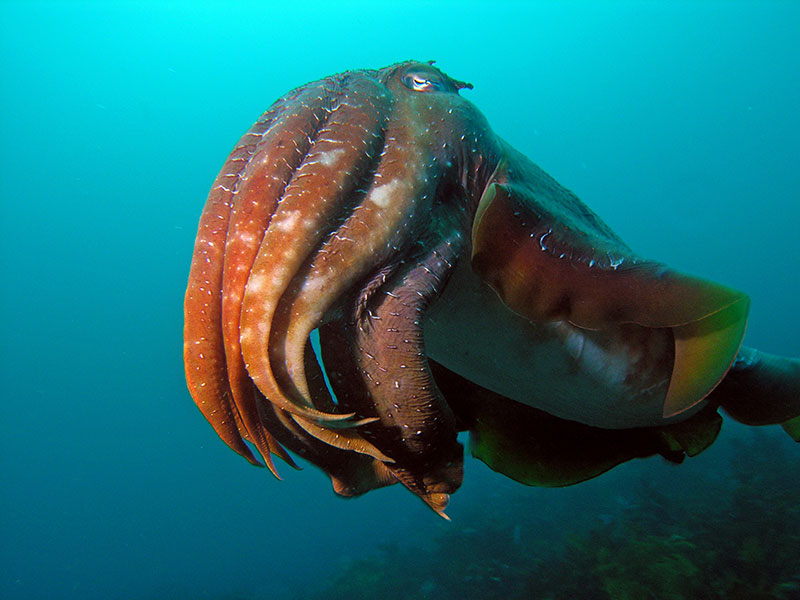
 | Long-Reef-Aquatic-Reserve-Colouring-Competition.pdf Size : 696.482 Kb Type : pdf |
Curious Kids: Why Do We Burp?
Why do we burp? We sometimes also burp before meals, why does this happen? — Ahaana, age 7
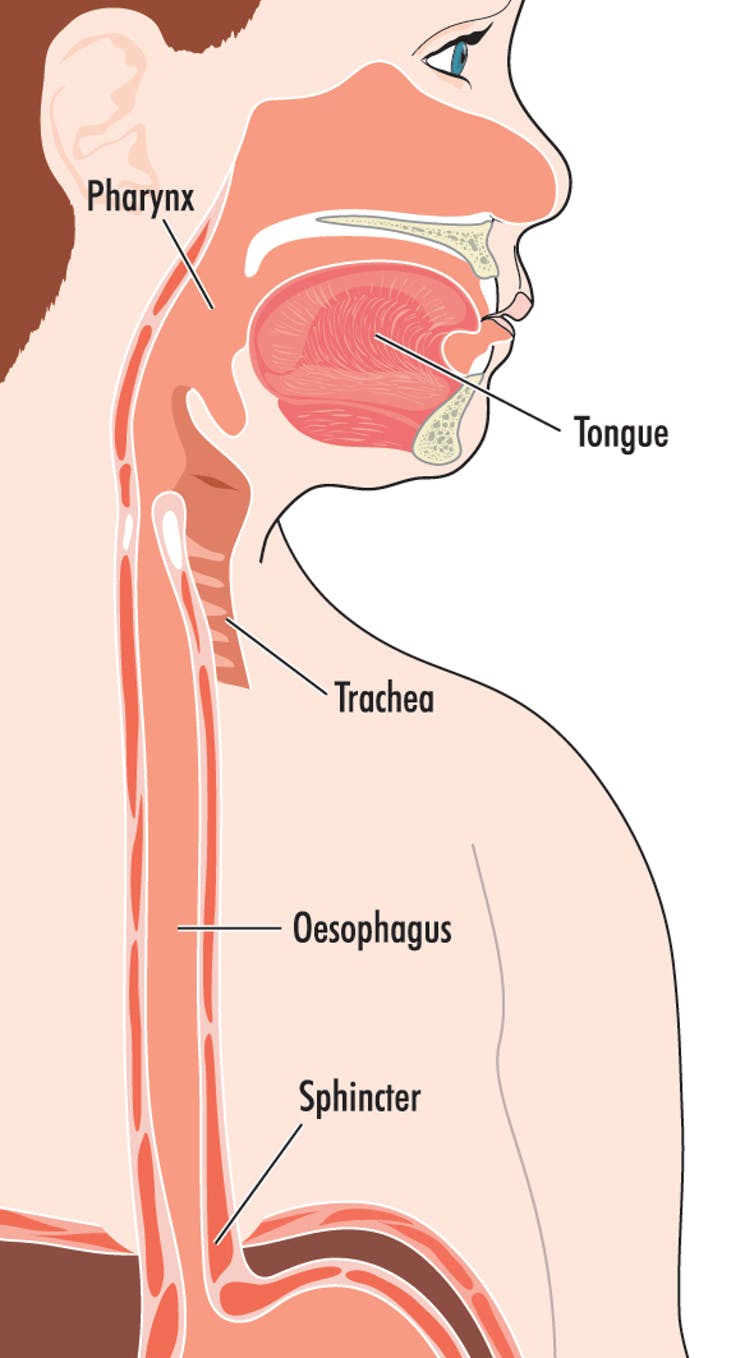
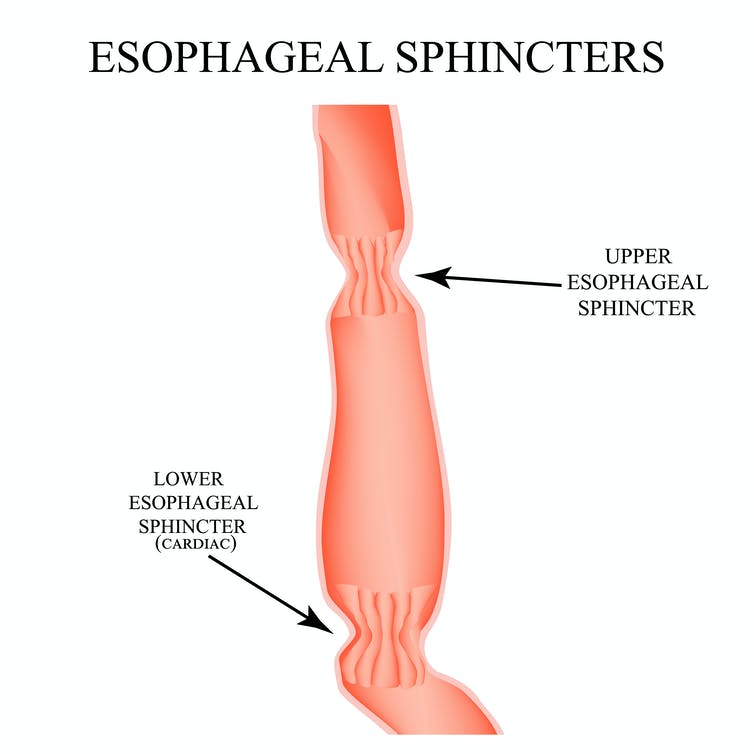
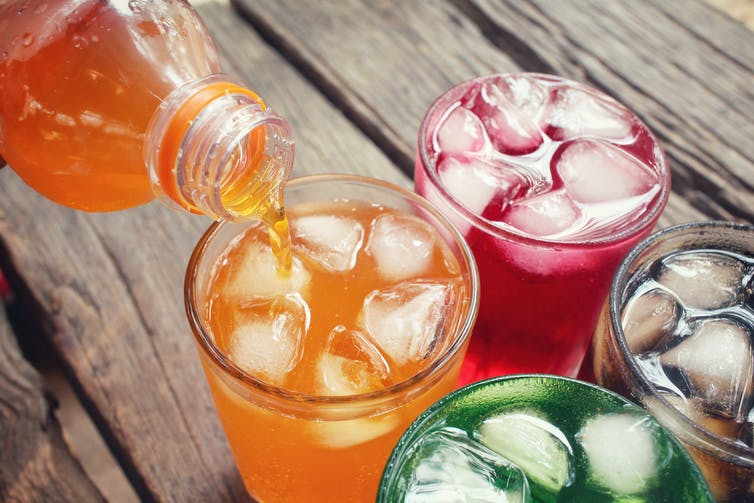
A Translucent Butterfly: Greta Oto
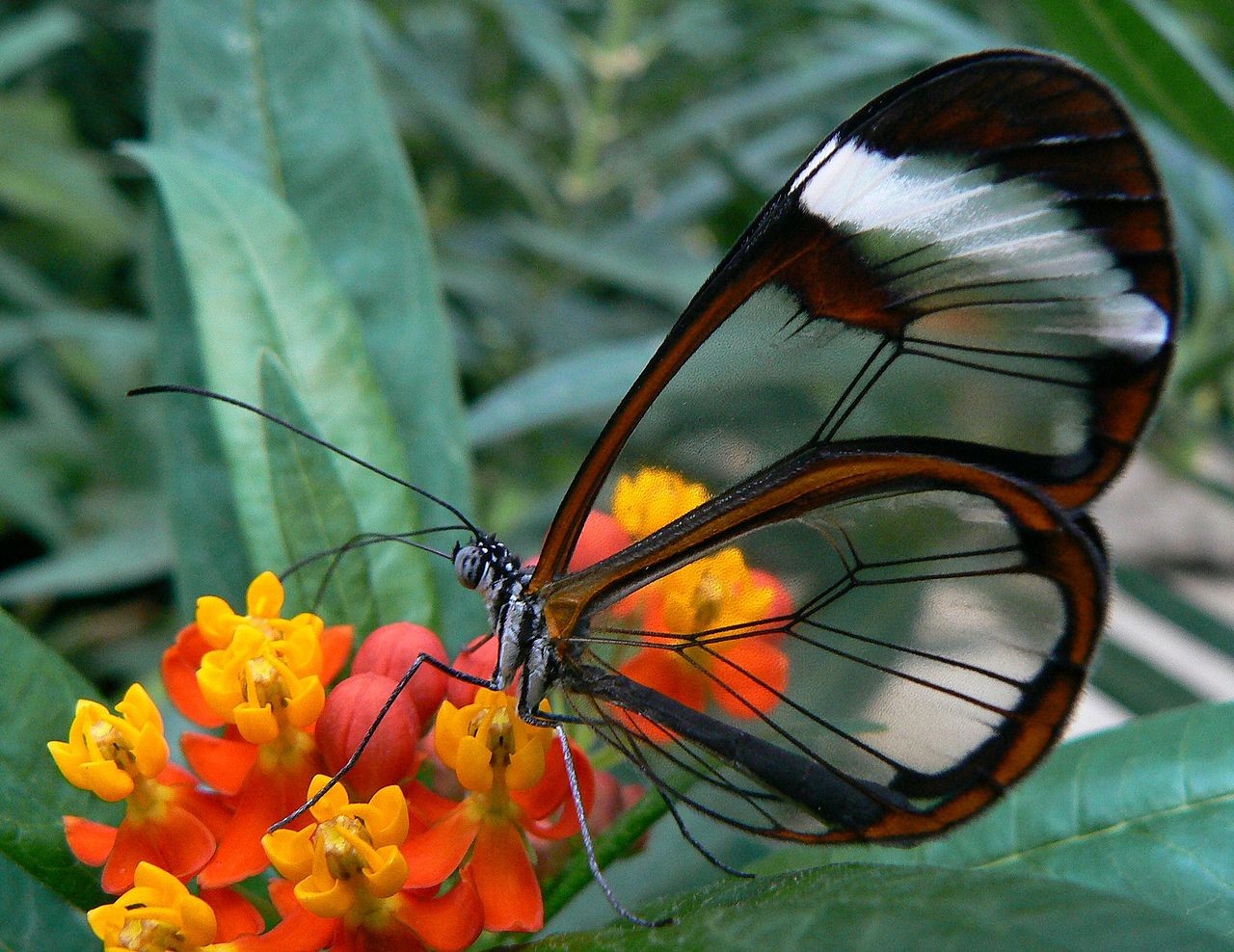
Sydney Film Festival 2020 Features Two Macquarie University Filmmakers
COVID-19 Could Be A Seasonal Illness With Higher Risk In Winter
Atmospheric Scientists Identify Cleanest Air On Earth In First-Of-Its-Kind Study
Could You Be Missing Out On The $750 Stimulus Payment?
- be an Australian resident living in Australia
- have reached the pension age
- meet an income test
- not be receiving any payment from Veterans Affairs.
- adjusted taxable income
- a deemed amount from account-based income streams.
- $55,808 for singles
- $89,290 for couples
- $111,616 for couples who are separated by illness, respite care or prison.
New Virtual Hospital Model To Benefit Rural Patients And Medical Students
Sniffer Dogs Recruited To Detect Hidden Leaks In NSW
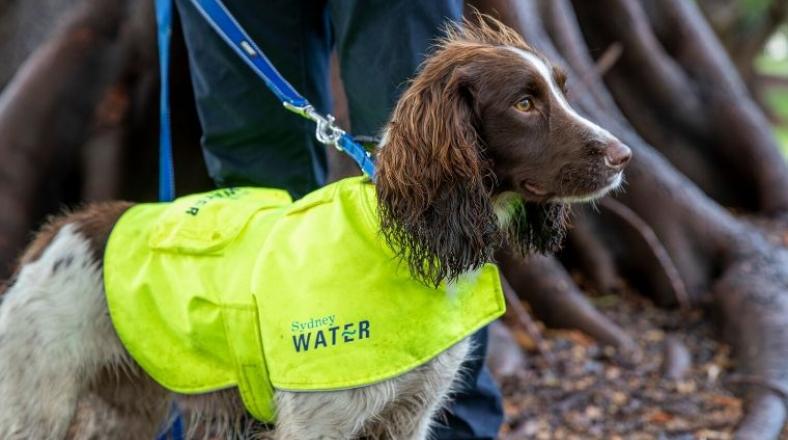
Our Response To COVID-19 Should Not Sponsor The Fossil Fuel Industry
Previously Claimed Memory Boosting Font 'Sans Forgetica' Does Not Actually Boost Memory
- Establishing the extent to which material written in Sans Forgetica feels difficult to process
- Comparing people's memory for information displayed in Sans Forgetica and Arial
- Analysing the extent to which Sans Forgetica boosted people's memory for information in educational text
- Testing people's understanding of concepts presented in either Sans Forgetica or Arial.
- Across the four experiments with 882 people, this scientific team found that in Experiment One, Sans Forgetica feels harder to read compared to Arial.
Disclaimer: These articles are not intended to provide medical advice, diagnosis or treatment. Views expressed here do not necessarily reflect those of Pittwater Online News or its staff.